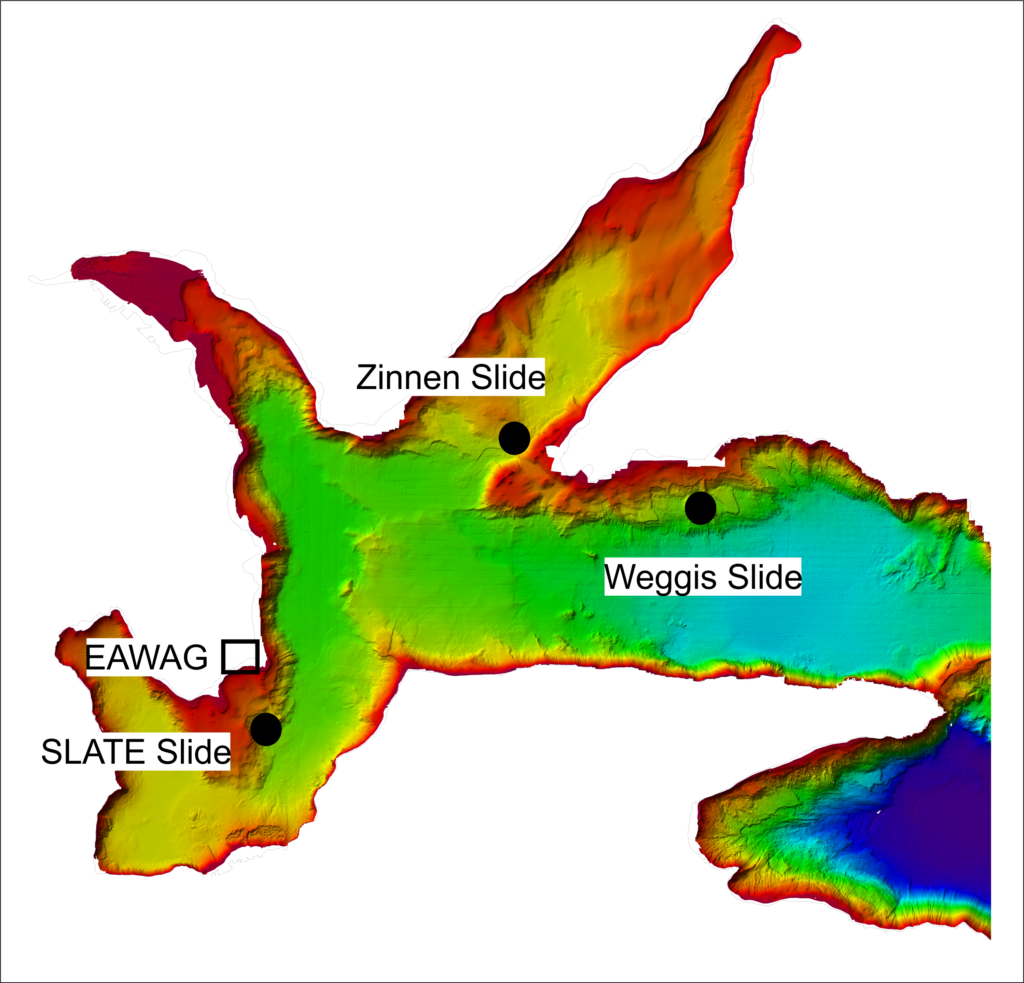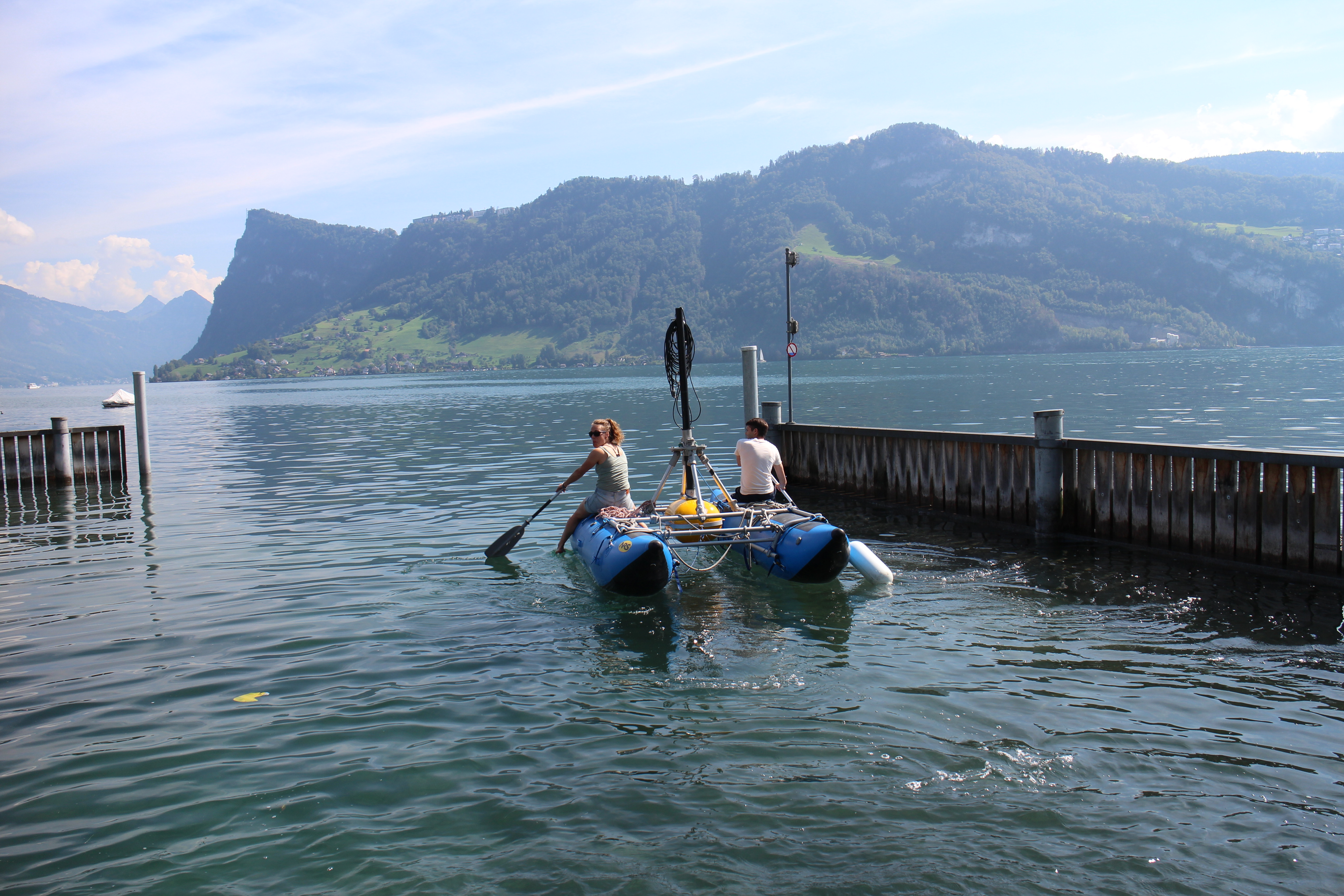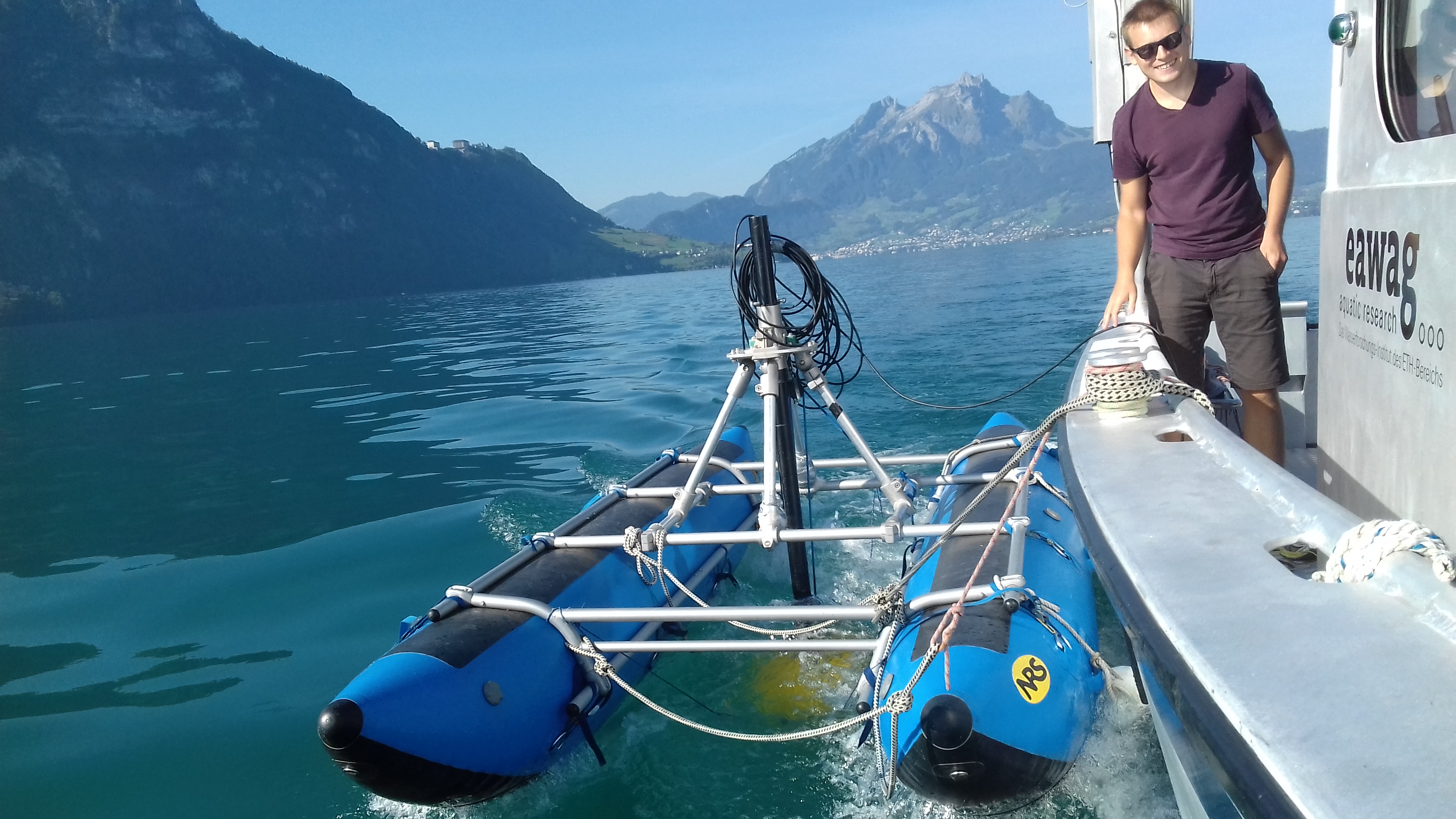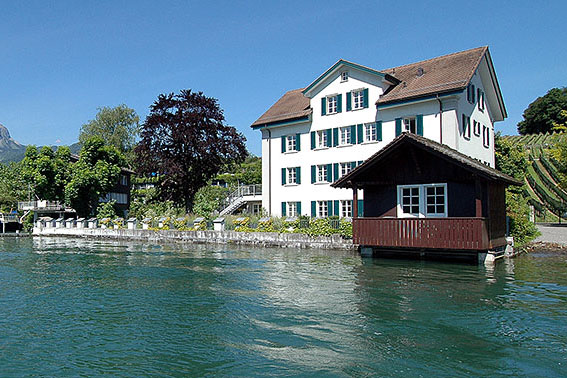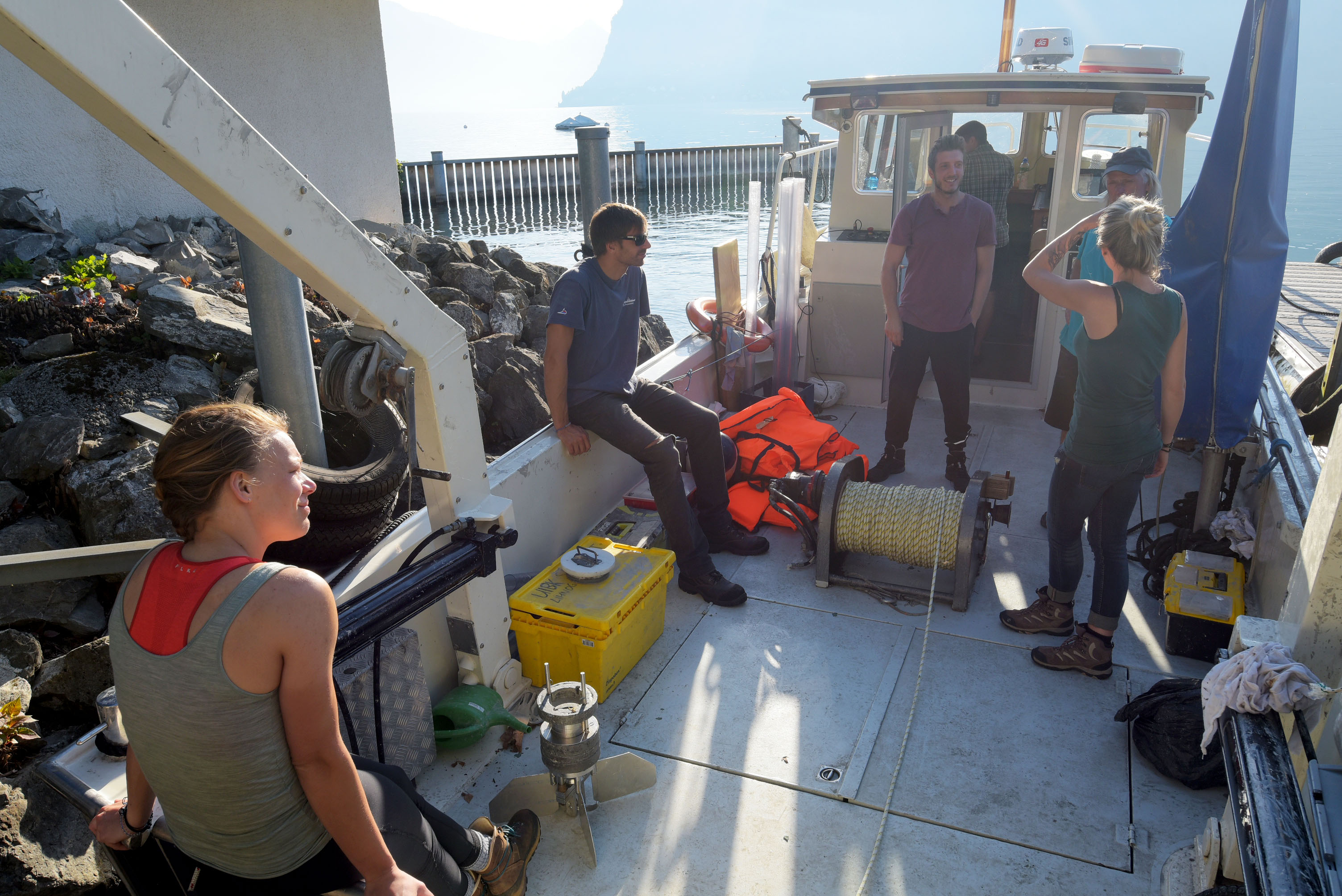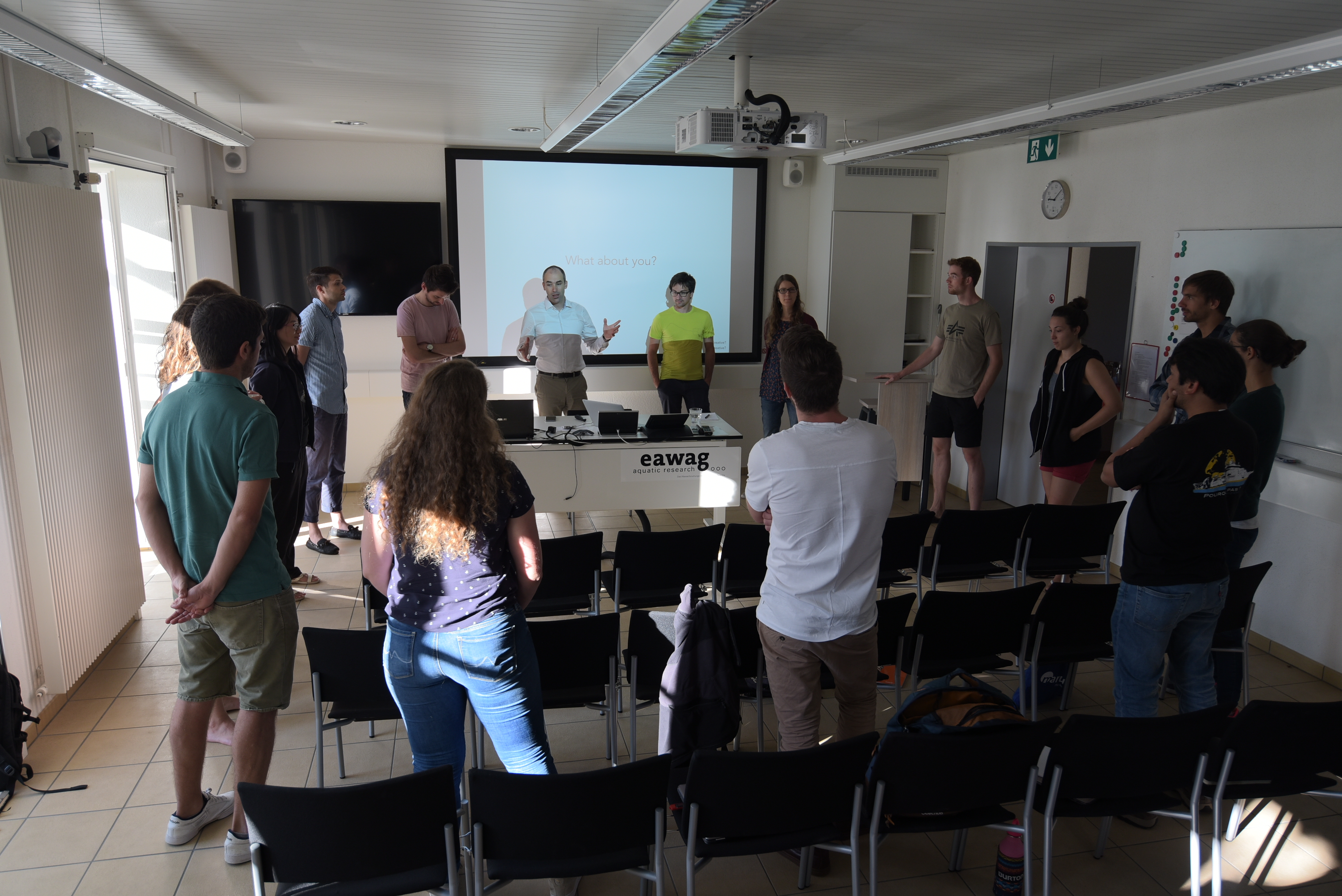ESR 1
SLATE AT THE 2019 EUROPEAN RESEARCHERS' NIGHT
RACHEL BARRETT (ESR1), TUGDUAL GAUCHERY (ESR3) | @ ECKERNFÖRDE (GERMANY) and BOLOGNA (ITALY) (27 September 2019)
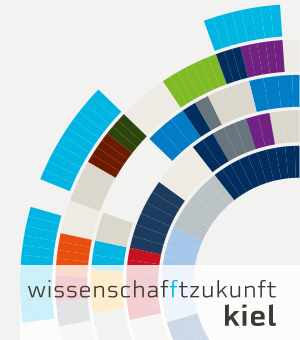
 SLATE at the European Researchers' Night in Eckernförde, Germany
SLATE at the European Researchers' Night in Eckernförde, Germany
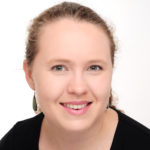 Rachel Barrett
ESR 1
Rachel Barrett
ESR 1
The European Researchers’ Night is an annual event that occurs simultaneously in multiple European cities, and gives researchers the opportunity to present their work to the public. Researchers can use a variety of mediums to present their work – and their enthusiasm for science – to the public. In Eckernförde (Northern Germany), where Rachel Barrett (ESR1) presented her work, there were, amongst others: lectures; posters; interactive science experiments; short films; a livestream from the international space station; a musical accompaniment to parts of the Blue Planet BBC documentary; an open ship (the German Research Vessel Littorina); and an “innovation truck” (highlighting work from local start-ups).
I (Rachel) presented a poster that addressed my recent work on the volcanic-flank collapse of Fogo Island in the Cape Verdes, as well as the broader implications of work on submarine landslides (i.e. hazard analysis). I shared a tent with a couple of researchers from GEOMAR Kiel who also work on submarine landslides and hazard analysis/mitigation, and the collaboration was very successful. I also did a short presentation about my research (and why I am a scientist/what makes me excited about science) during a transition between short films that were shown on a big outdoors screen. I was impressed at the high level of public engagement at the event – during the six hours we were there, there were seldom a few minutes where we were not discussing our research (and science in general) with members of the public, both young and old, and people were engaged and interested. I really enjoyed being able to present my work at the European Researchers’ Night in Eckernförde, and look forward to being involved again next year.
Location- Eckernförde, Schleswig-Holstein, Germany
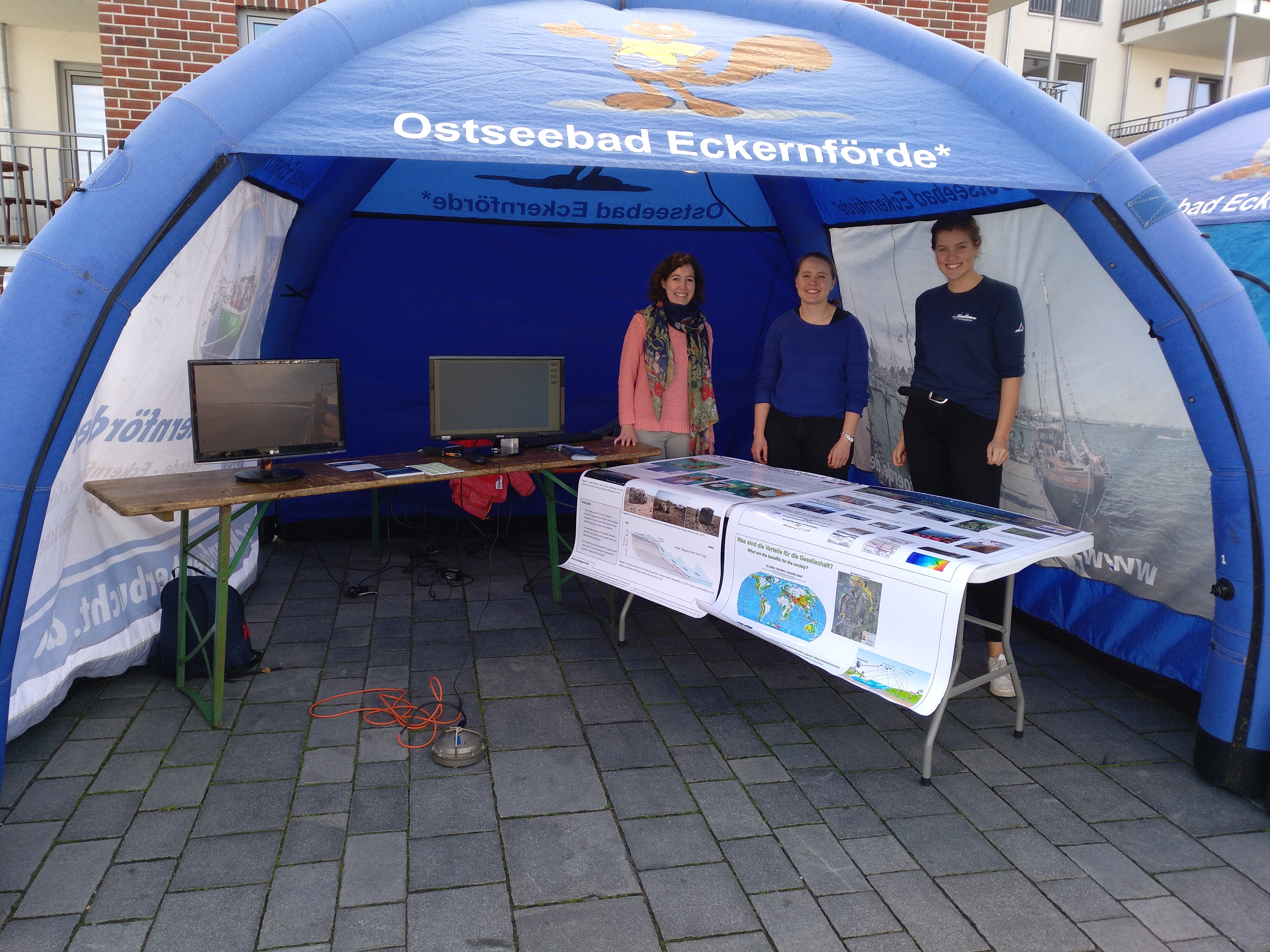
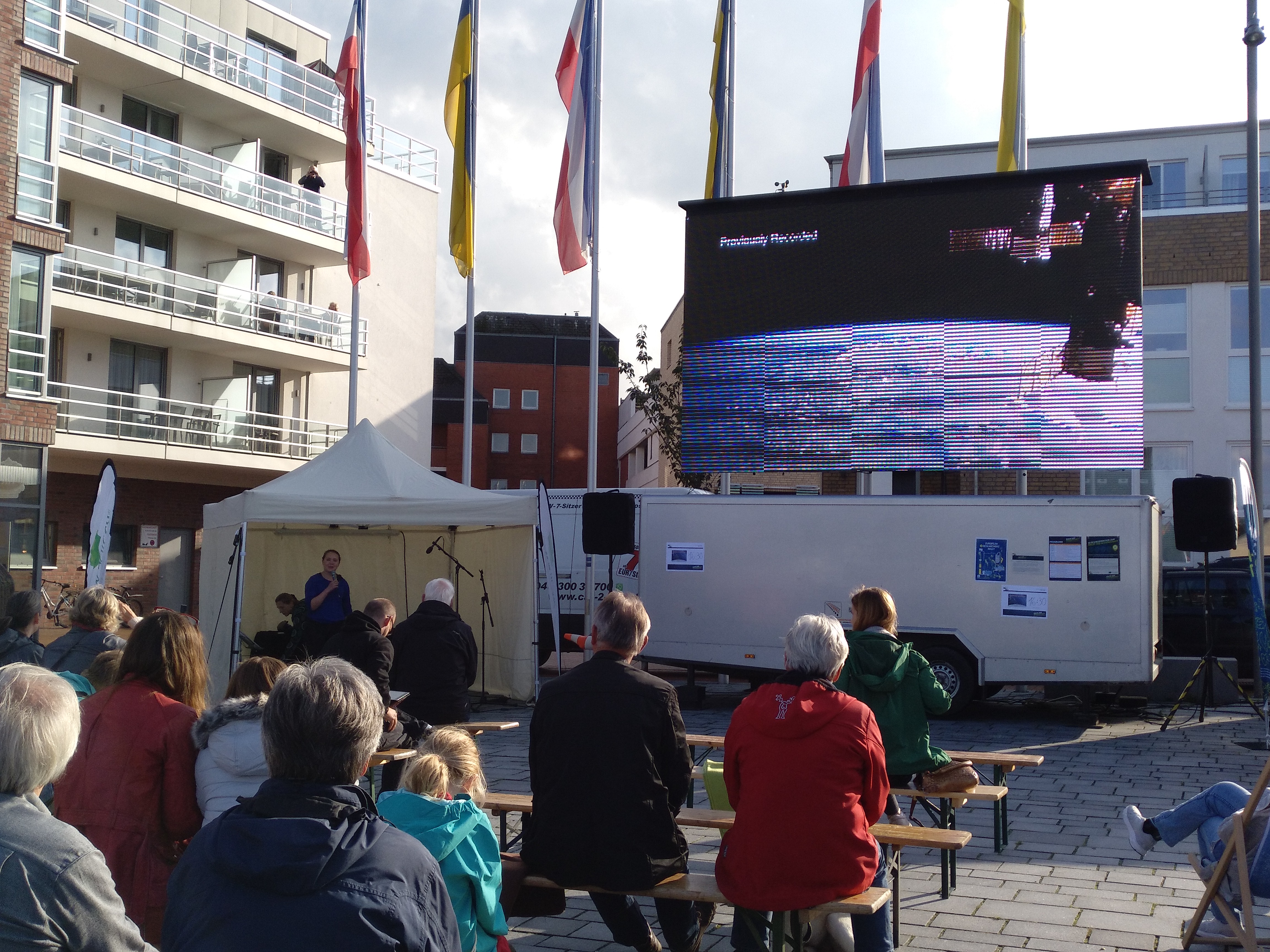
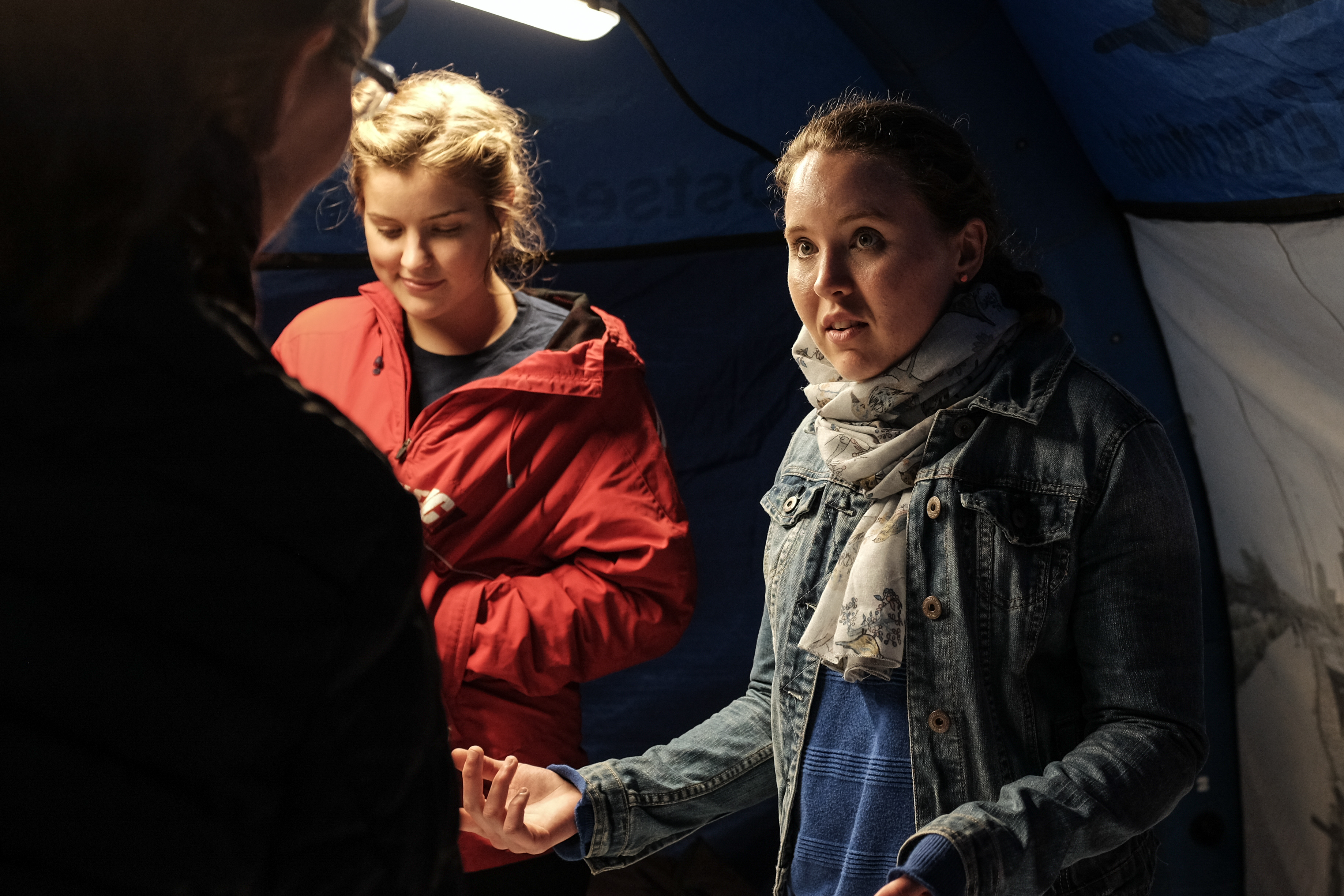
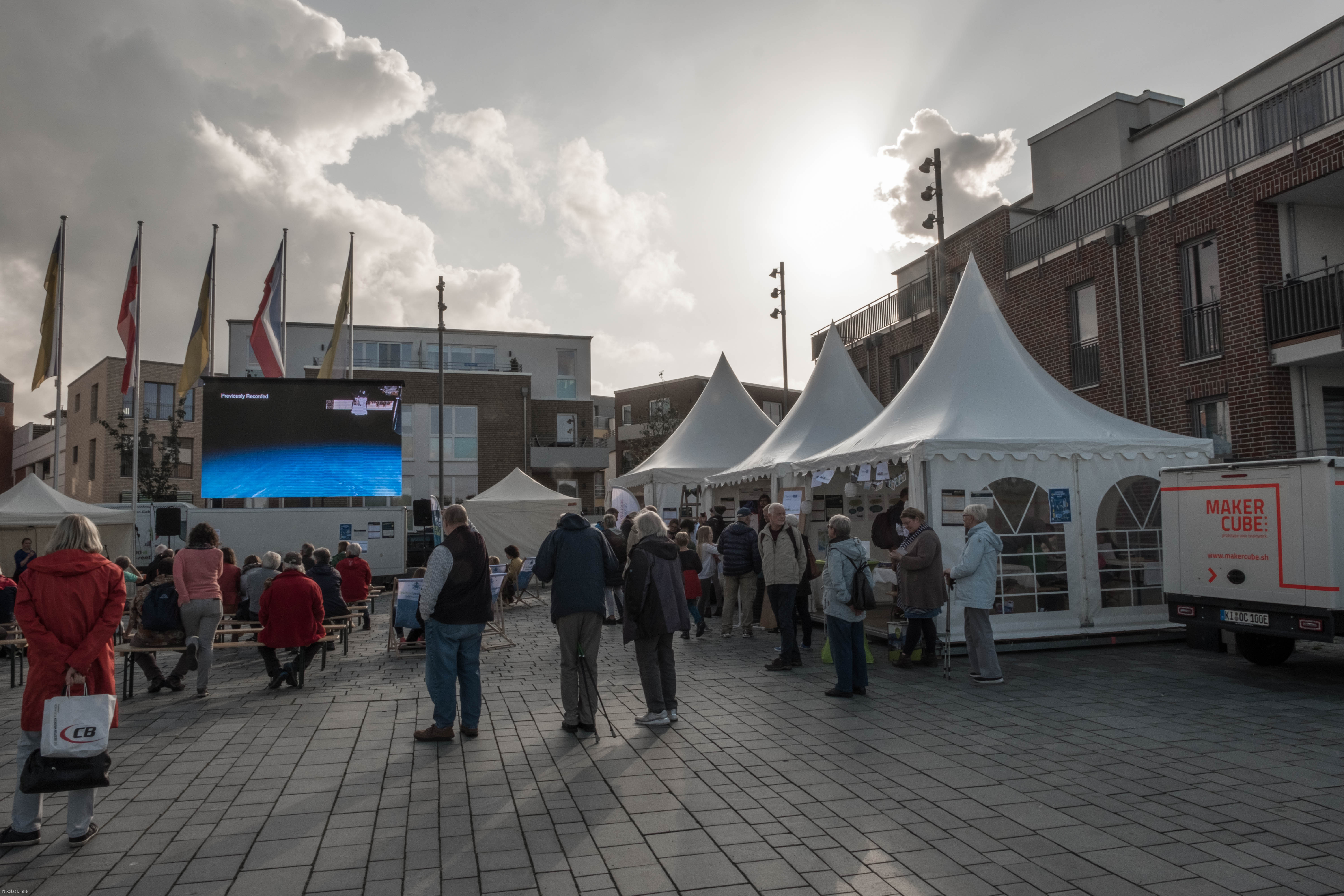
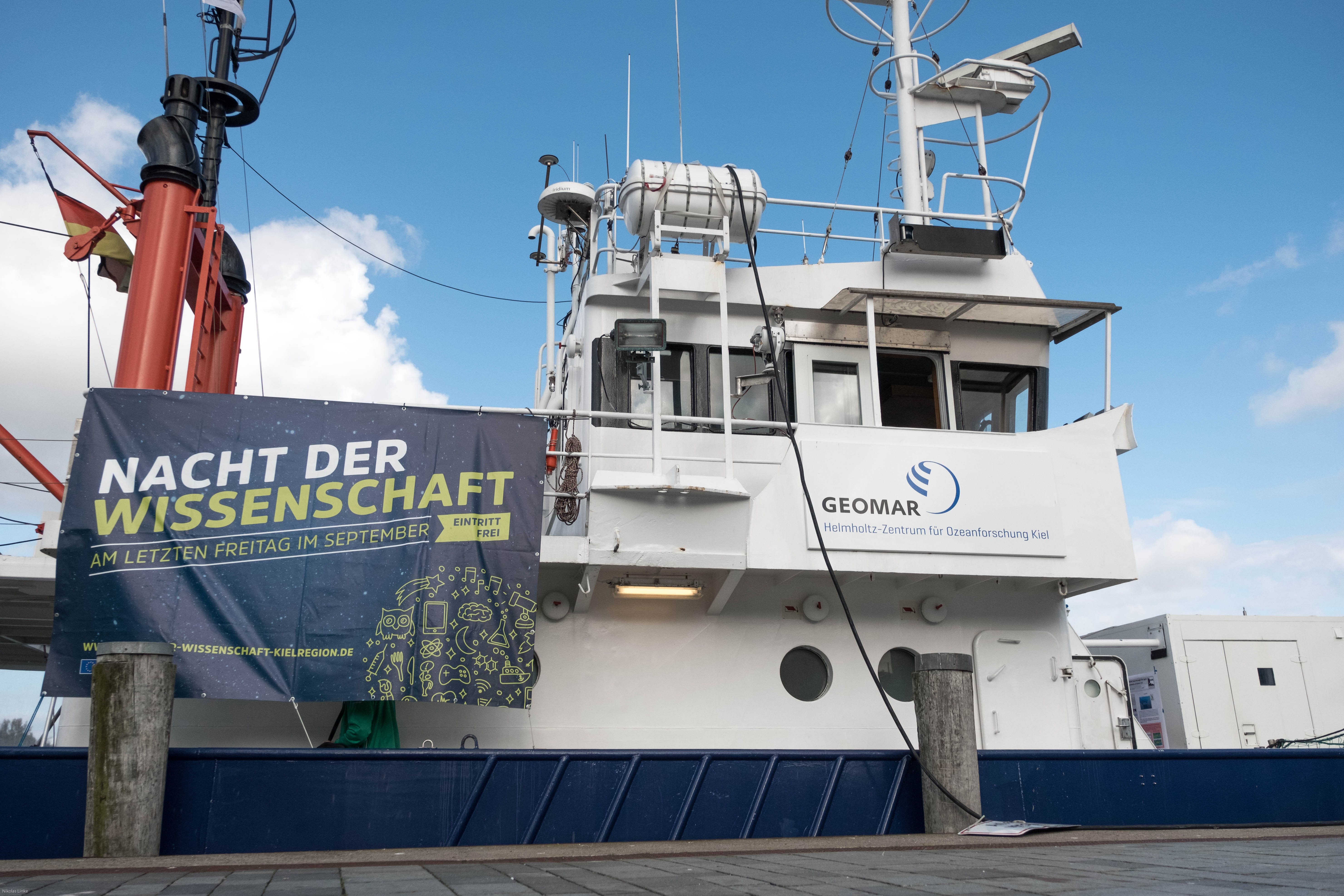

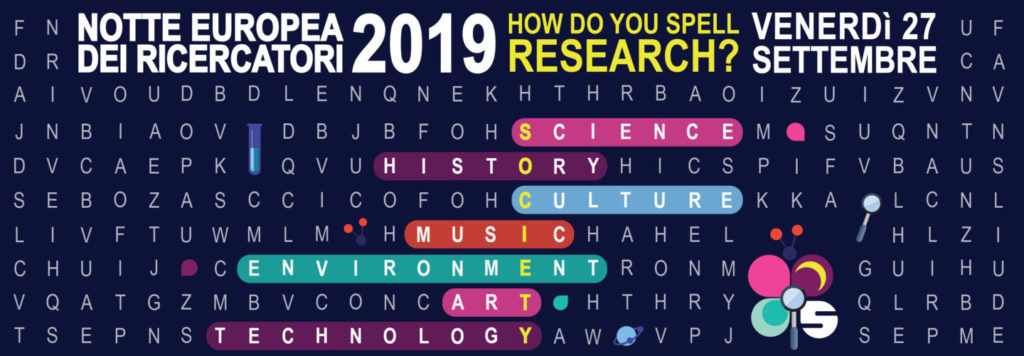 SLATE at the European Researchers' Night in Bologna, Italy
SLATE at the European Researchers' Night in Bologna, Italy
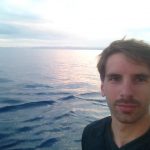 Tugdual Gauchery
ESR 3
Tugdual Gauchery
ESR 3
This was the first year I (Tugdual) did outreach at the European Researchers’ Night, and I participated in Bologna. I went with colleagues from my research group to present the work done at ISMAR (CNR) on microfossils, geochemistry, deep-water corals and sedimentology. I used this opportunity to show my work with multi-channel seismic profiles, explain how and why we acquire these data, and how (coupled with other proxies) we can reconstruct the history of a sedimentary basin.
Within a project funded by the Marie Sklodowska-Curie Actions, I had the chance to participate at the stand along with fellow Marie-Curie-funded researchers from Bologna. They asked us to bring a mysterious object related to our work and leave it on the table. To enhance curiosity, the game was to let the public pick a profile on the table (with a picture of us and key words related to our work) and correlate it with the mystery object. Once they succeeded, we could engage in conversation to explain our work in more detail and discuss what the object is. For this occasion, I brought a core catcher and once they guessed what it was, I explained the use of the core together with seismics (with images) to identify gravity-driven flows (explained with sketch), which represents a hazards for coastal cities and offshore infrastructures.
Overall, this was a fantastic experience to explain my work to the public and bring/reinforce an interest in science, especially for young people. I was very surprised by the number of young people who came to the stand and were interested in our work. It was challenging to explain my work in a simple and interesting way, especially in Italian, but it was very useful and enjoyable. Thank you!
Location- Bologna, Italy
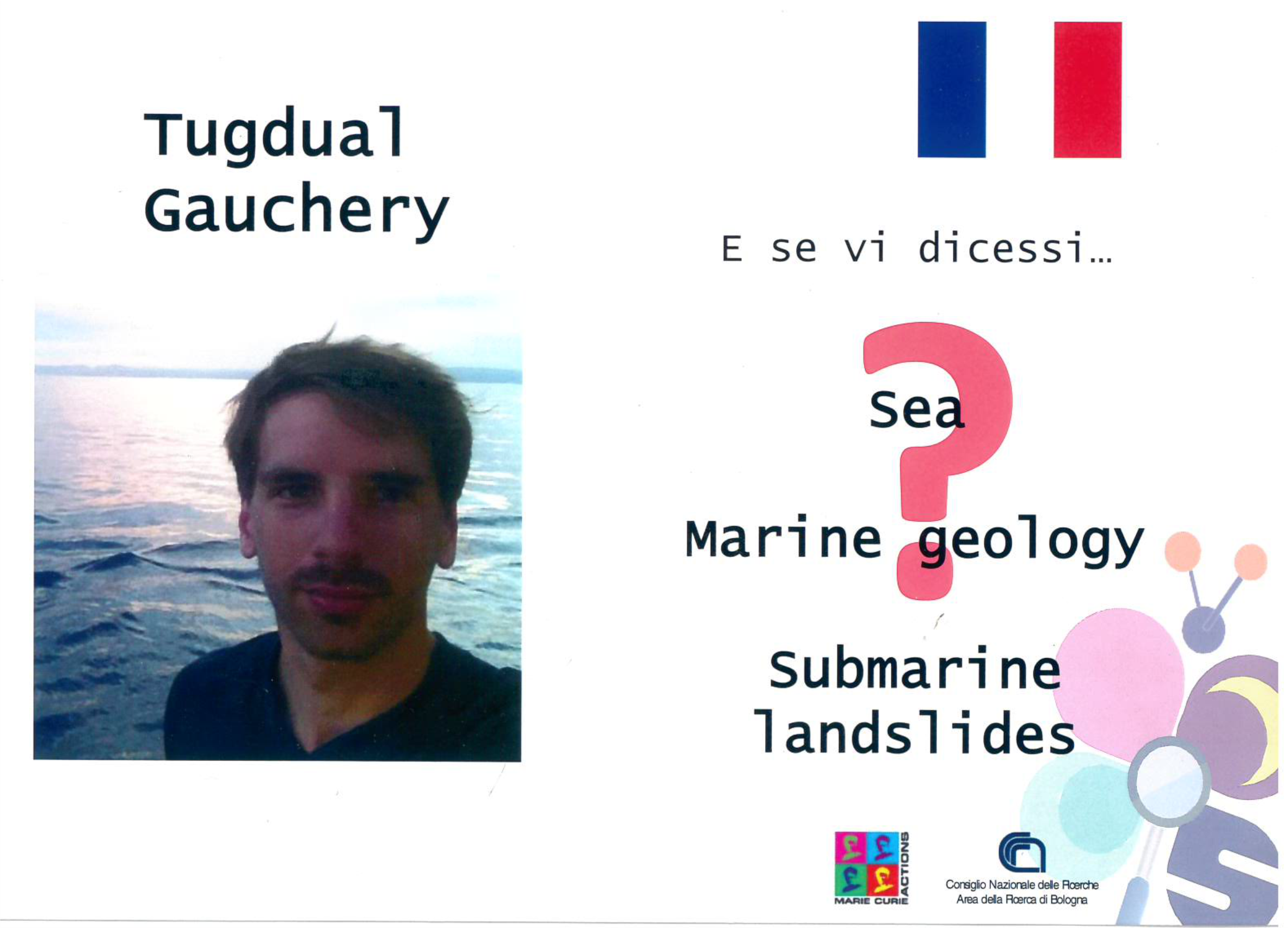
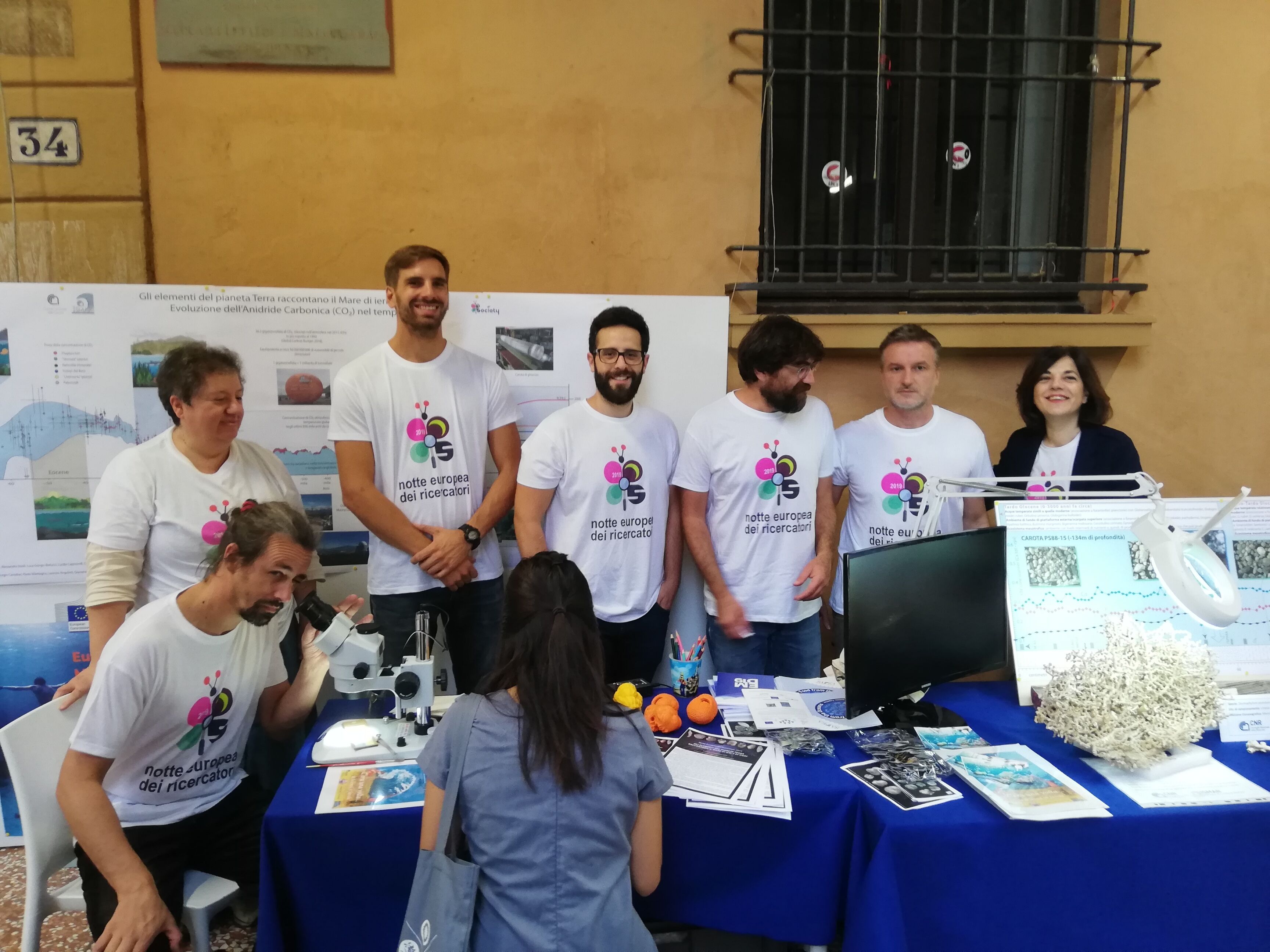
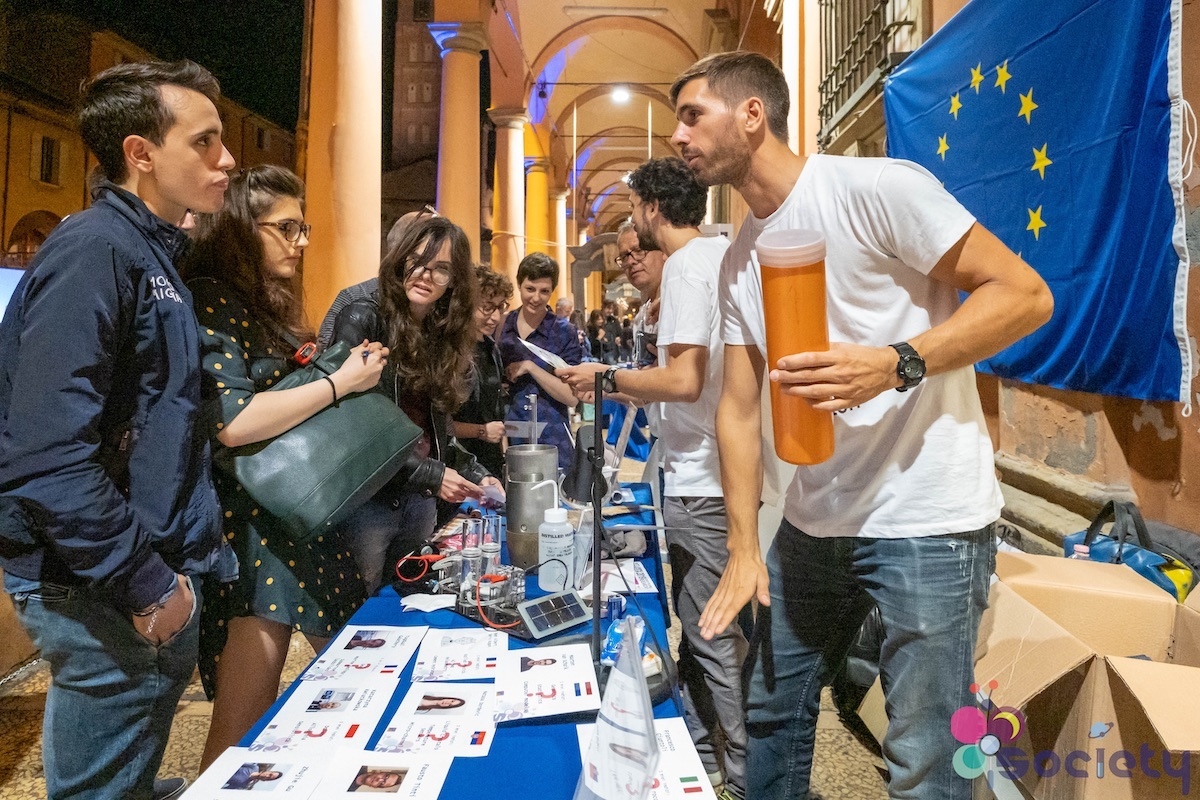
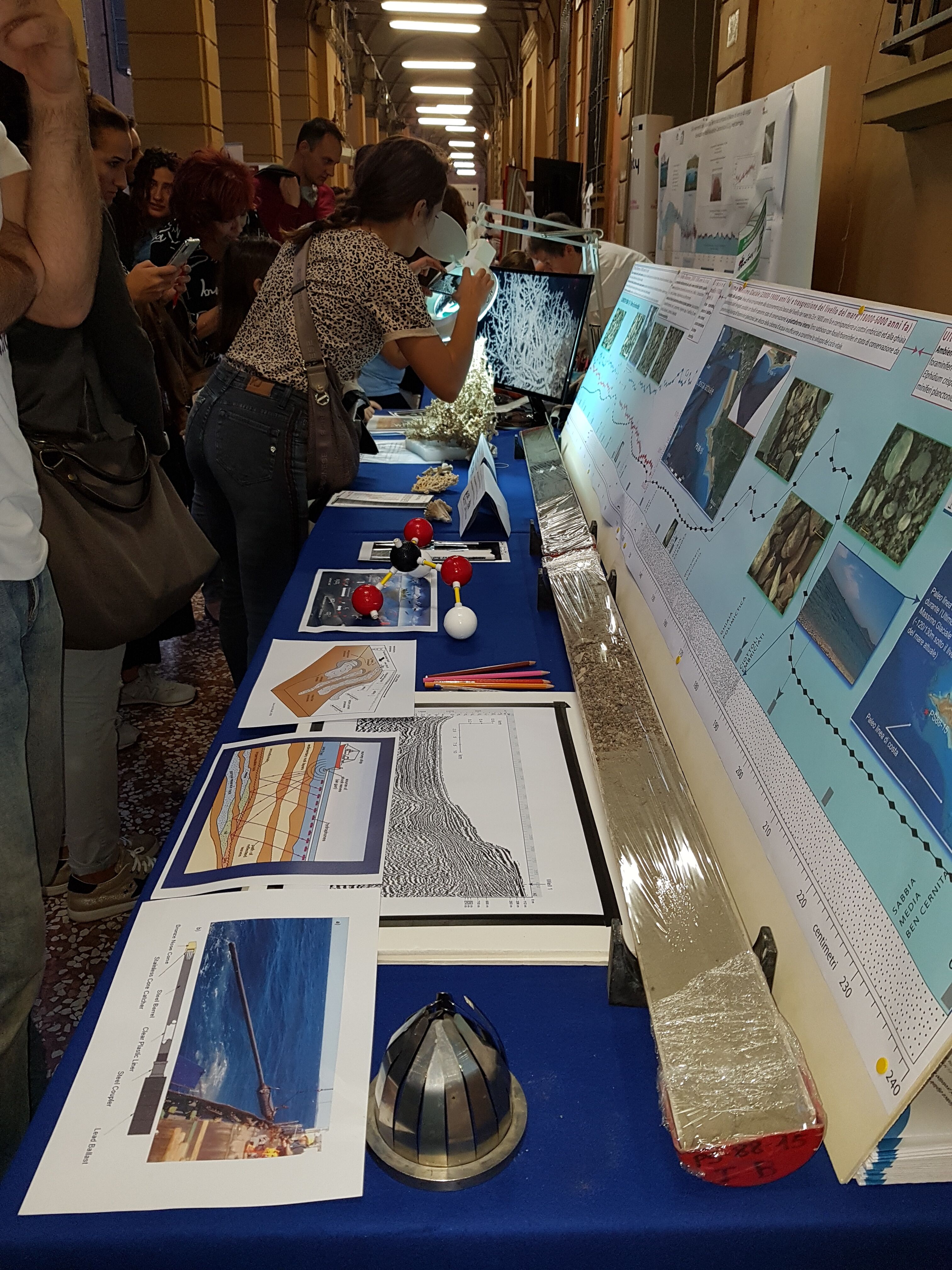
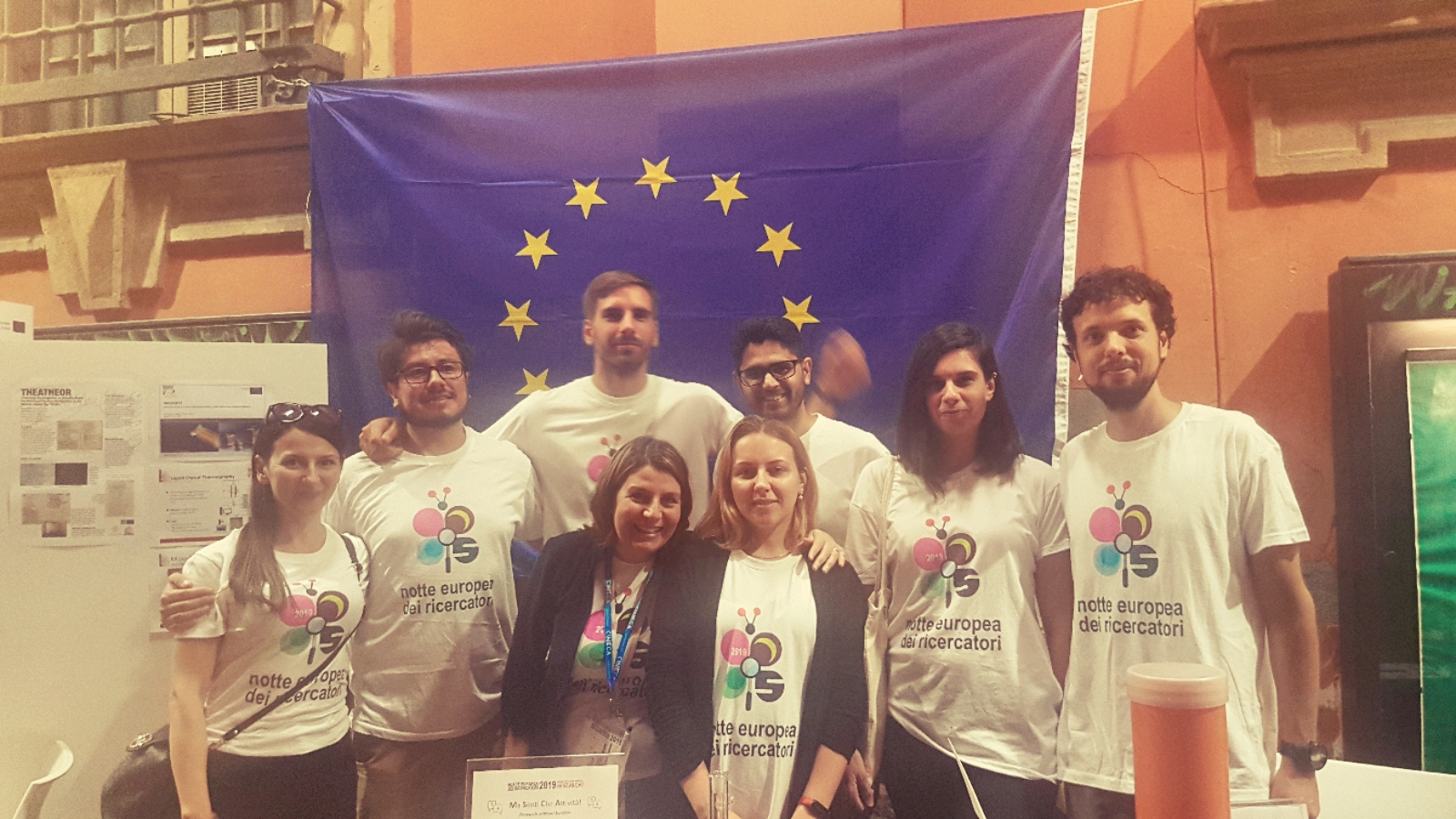
@ Vienna, Austria (07 – 12 April 2019) | 2019-07-23
A GUIDE AROUND EGU 2019
ESR1, ESR 2, ESR 3, ESR 4, ESR 5, ESR 6, ESR 7, ESR 8, ESR 9, ESR 12, ESR 13, ESR 14, ESR15 | @ VIENNA, AUSTRIA (7-12 April 2019)
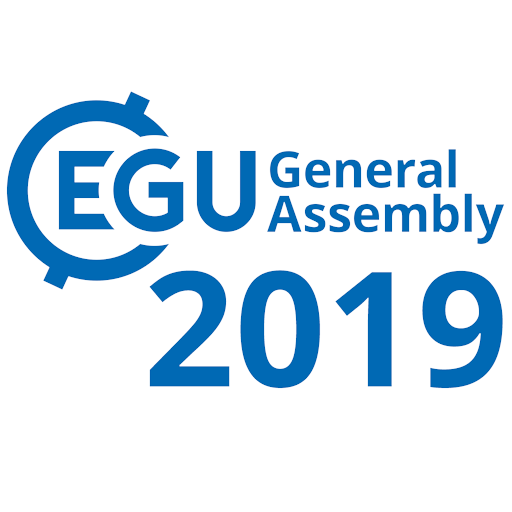
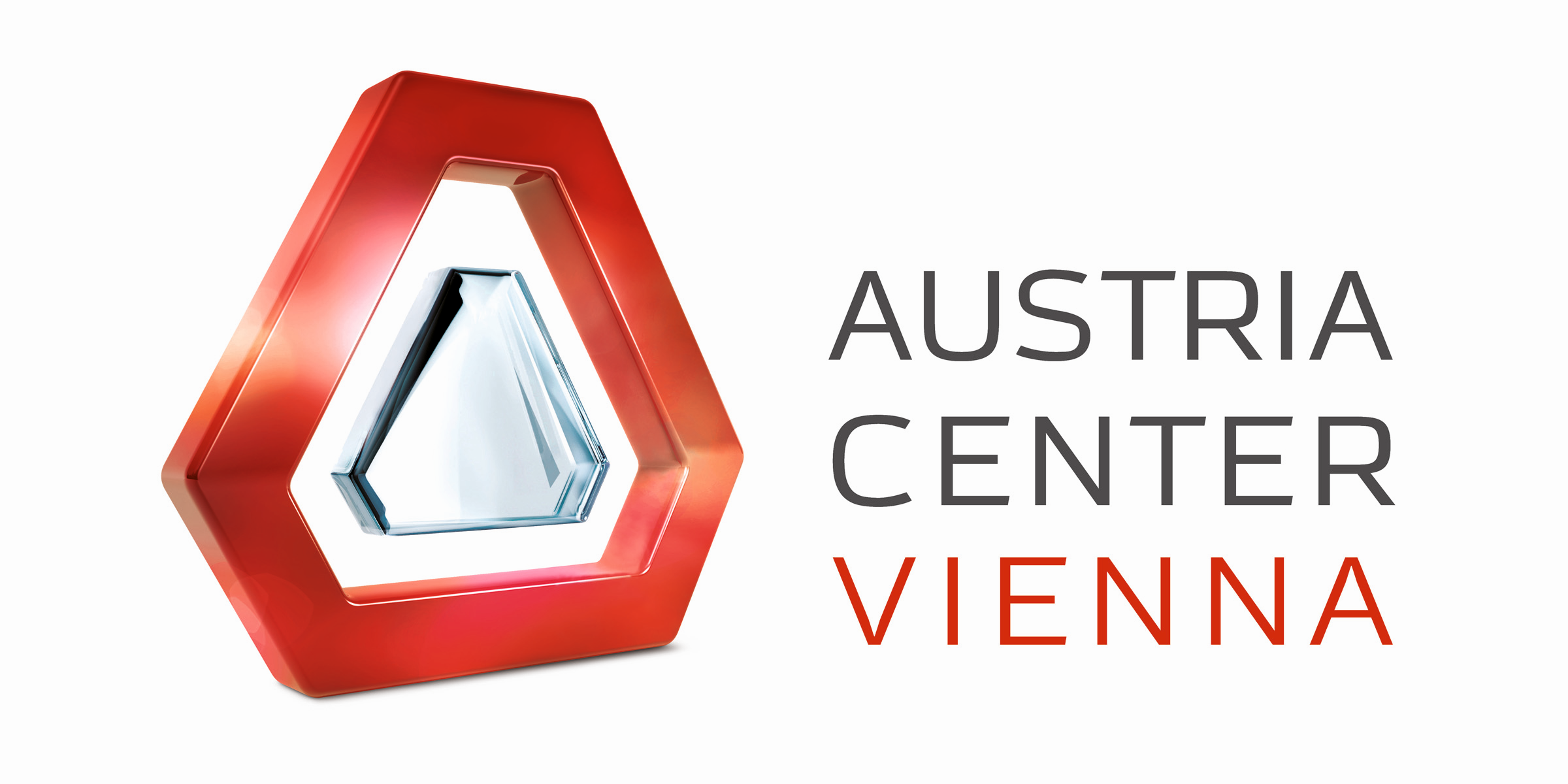
“The EGU General Assembly 2019 was a great success with 5,531 oral, 9,432 poster, and 1,287 PICO presentations that were attended by 16,273 scientists from 113 countries” (Copernicus Meetings, 2019).
SLATE was well represented with 12 PhD candidates, PIs (Achim Kopf, Michael Clare, Carl Harbitz, Finn Lovholt, Michael Strasser) and Aggeliki Georgiopoulou from the advisory board presenting their work.
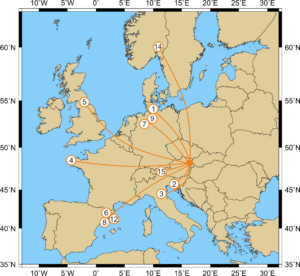
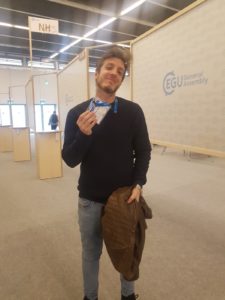 Presenting our work
Presenting our work
Rachel, Jonathan, Tugdual, Shray, Kate, William and Matthias drew crowds of people into the lecture rooms with their amazing presentations. They spoke on a variety of topics; covering different aspects of turbidites and their evolution, contourites and submarine landslides.
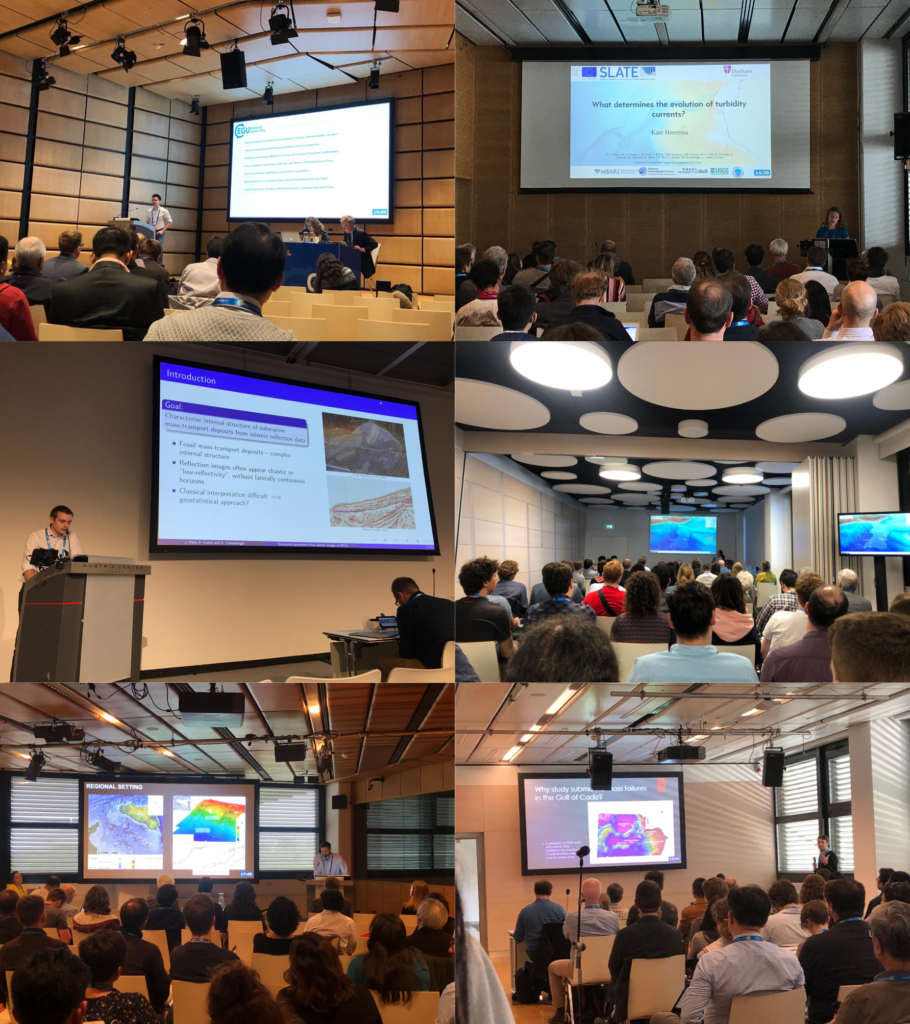 “I was very happy to be able to present my work at this conference, as it gives an occasion to present our work in front of a wide audience with very diverse backgrounds. I came out with very good feedback and advice for my work.” (Tugdual Gauchery, ESR 3)
“I was very happy to be able to present my work at this conference, as it gives an occasion to present our work in front of a wide audience with very diverse backgrounds. I came out with very good feedback and advice for my work.” (Tugdual Gauchery, ESR 3)
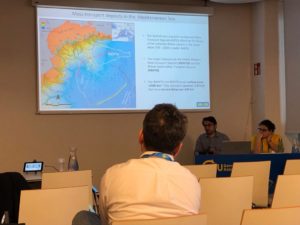
„It was my first time at the EGU and it was overwhelmingly large. I had the opportunity to talk to several researchers after my talk – it is always good to get feedback on both the positive and negative parts of ones research.” (Shray Badhani, ESR 4)
Davide, Ting-Wei, Stefano, Ricarda and Maddalena presented their work in the poster sessions and attracted a lot of people.
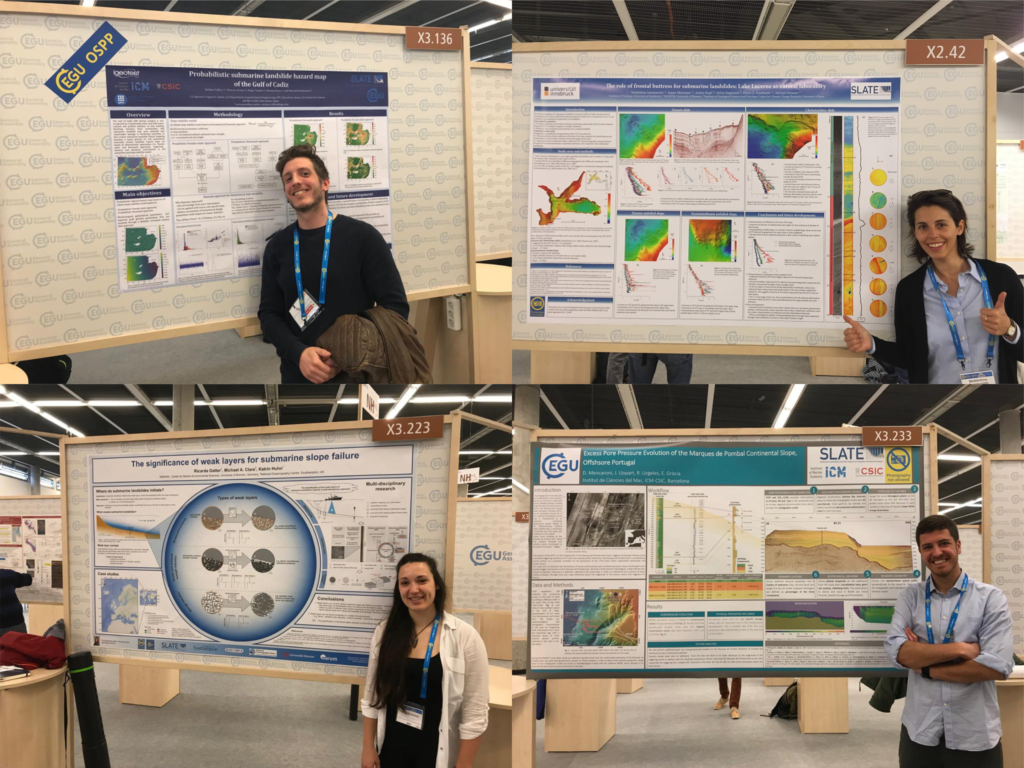
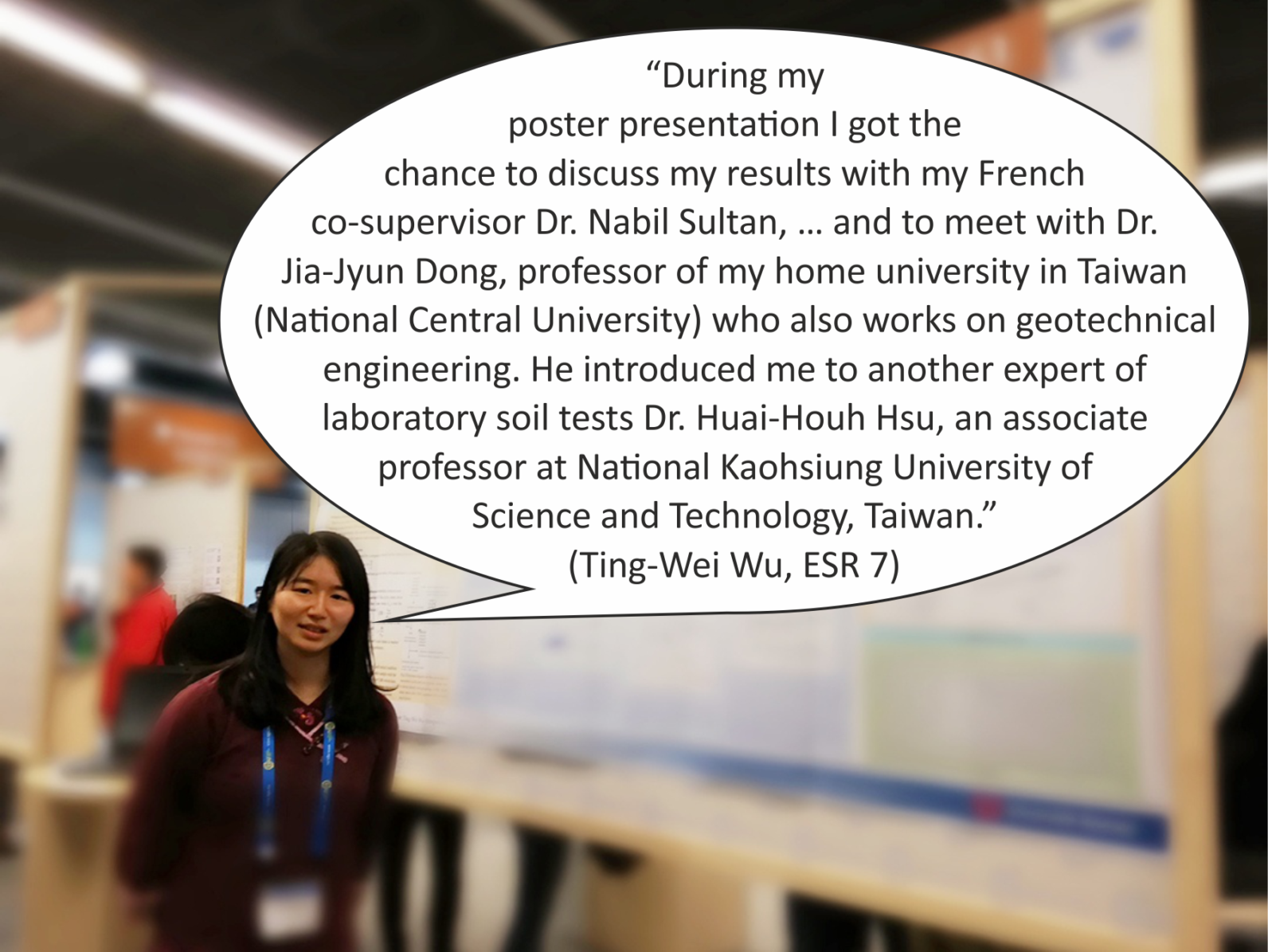
“Presenting a poster at a conference like EGU is a great learning opportunity for any early career scientist. On one hand, I had the chance to discuss my research with people working in the same research field and to meet scientists I had only known from reading their papers. What surprised me the most, however, were the questions I got from scientists specialized in completely different fields, looking at my project from a prospective I do not usually consider. People who were just randomly walking around posters asked me the most challenging questions, highlighting issues that I never considered before, but that helped me to have a more complete understanding of what I am studying.” (Davide Mencaroni, ESR 6)
And learning new thingsApart from presenting our own work, we took the opportunity to learn more about work from outside our own fields. Alongside the traditional poster and oral presentations, EGU also hosts so called “PICO” presentations (Presenting Interative COntent) and short courses on more general topics in science.
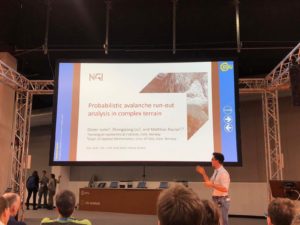
“One thing that I really enjoyed about EGU were the PICO sessions. PICOs start with quick-fire two minute presentations from each researcher to briefly introduce their topic and state their main conclusions. After, everyone moves across to the interactive area, where each presenter has their own workstation and large screen. This really facilitates discussion and allows for more flexibility that a standard poster or talk. For me, the PICO sessions are a great way to be introduced to an unfamiliar area, because the results are presented up front and you get to see a rapid cross section of the state-of-the-art in a particular field.” (Jonathan Ford, ESR 2)
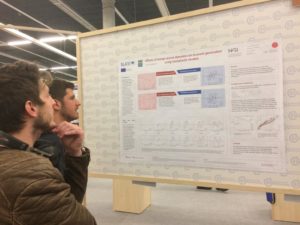
“It was a great opportunity to get some insights from overlapping, but vastly different, fields. For instance to see what the current state of research in Powder Snow Avalanches is, or to get some background knowledge on numerical modelling in turbidity currents as preparation for my secondment at NGI.” (Kate Heerema, ESR 5)
“One of the most exciting sessions I attended was on the recent tsunami events in Sulawesi and West Java (Krakatao), Indonesia (Blog). Although most of the group seemed to agree that these tsunami events were, in fact, submarine landslide-related, there was some surprisingly lively pushback from at least one seasoned researcher. I think the overall tsunami community seems to be experiencing a small paradigm shift in how they think about tsunami hazards. I also enjoyed stopping by different poster sessions related to tsunami hazards and had some great networking conversations with a group of researchers from Singapore about their work and how it relates to some tsunami survey work that I previously did as a master’s student” (William Meservy, ESR 12)
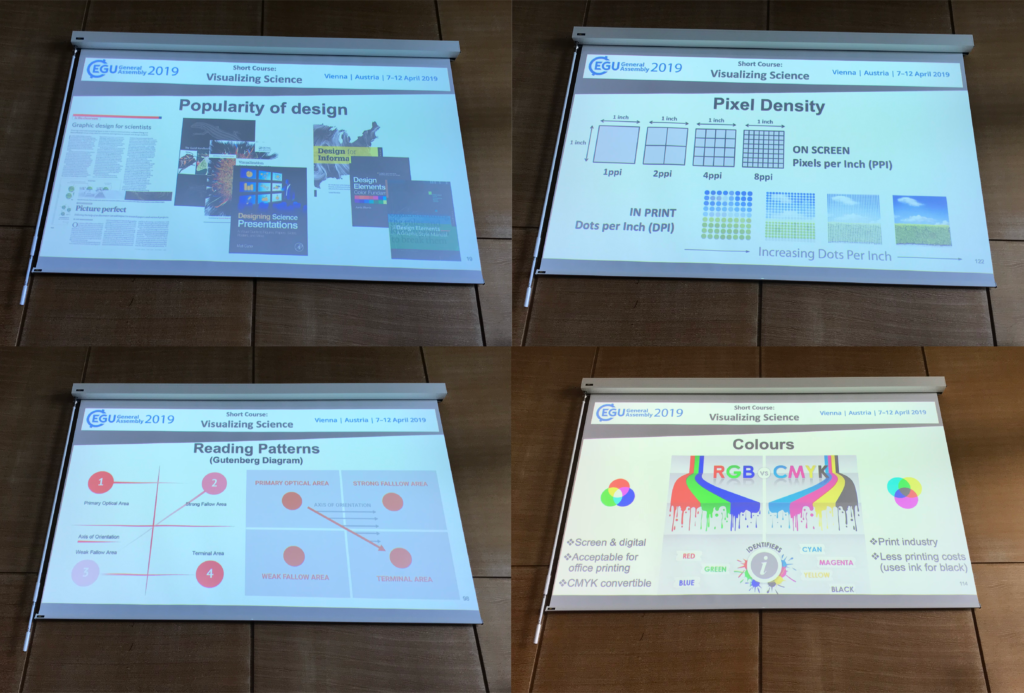
“I went to three courses, of which I especially liked the “Visualizing Science” course. I think we often forget how important it is to present our research to other scientists, as well as to the general public.” (Ricarda Gatter, ESR 9)
“The quantity and variety of soft skill courses available at the EGU undoubtedly adds value to the conference. I attended a course about communicating science with the general public and enjoyed hearing different perspectives about what effective communication looks like, and how that can take different forms. One point that stood out was the value of knowing when it is worthwhile to get the assistance of people who are trained in communication, such as journalists, to communicate significant results.” (Rachel Barrett, ESR 1)
Need help to find your way around? - use the EGU AppFinding your way around a big conference such as EGU can be difficult. Luckily, there was an app available in which you could find all the contributions and put together your personal programme. In addition, we kept everybody up to date with our own contributions via Twitter.
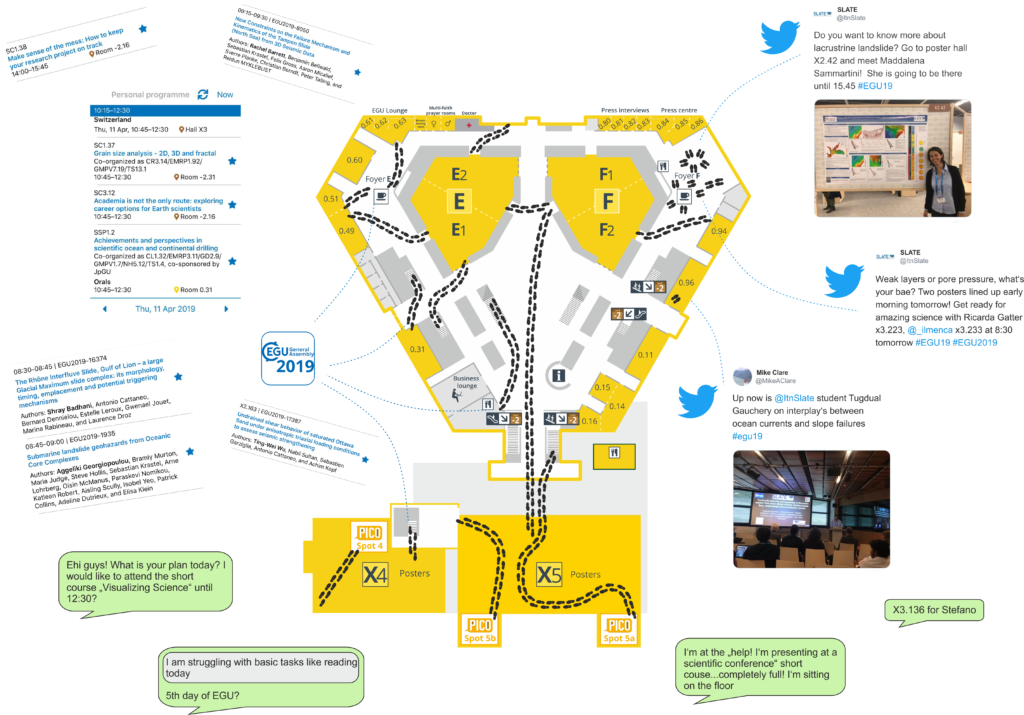
“I knew that EGU is the most important Geoscience conference in Europe, but I didn’t expect something like this. It was difficult not to be impressed by the amount of different topics and talks, but above all, I was struck by the hundreds of posters that everyday are hanging in these huge rooms.” (Maddalena Sammartini, ESR 15)
To sum it up“I was honestly impressed by the EGU conference. It was the perfect environment to discuss a wide range of research topics and learn about other researchers’ PhD experiences.” (Stefano Collico, ESR 8)
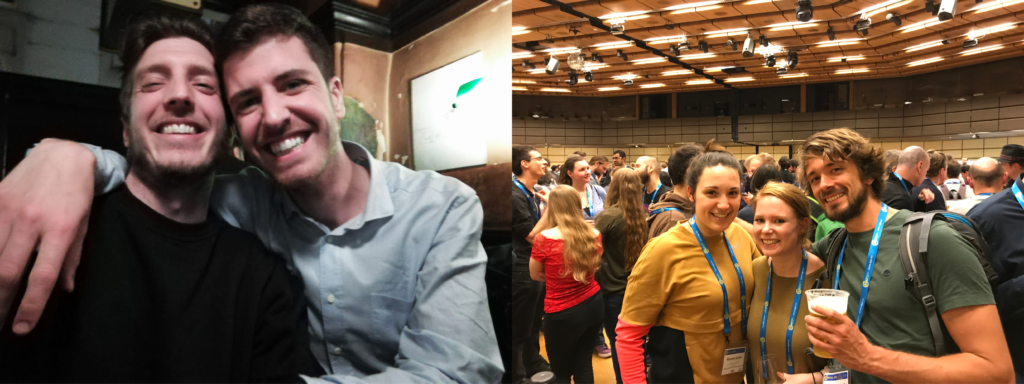
“It is such a great international experience. I even met my friends from my home university in India. I am already looking forward to EGU2020.” (Shray Badhani, ESR 4)
“One of the highlights of the experience for me was that I was lucky enough to be able to bring my wife and kids along to explore Vienna. In the evenings, we were able to walk in the city together and eat a lot of goulash and Viennese chocolate cake” (William Meservy, ESR 12)
“EGU is an essential event for every geoscientist working Europe. It is the perfect opportunity to meet new people with common interests, present the latest progress of your work, get valuable feedback and to foster old friendships” (Matthias Rauter, ESR 14)
EGU - Let's meet again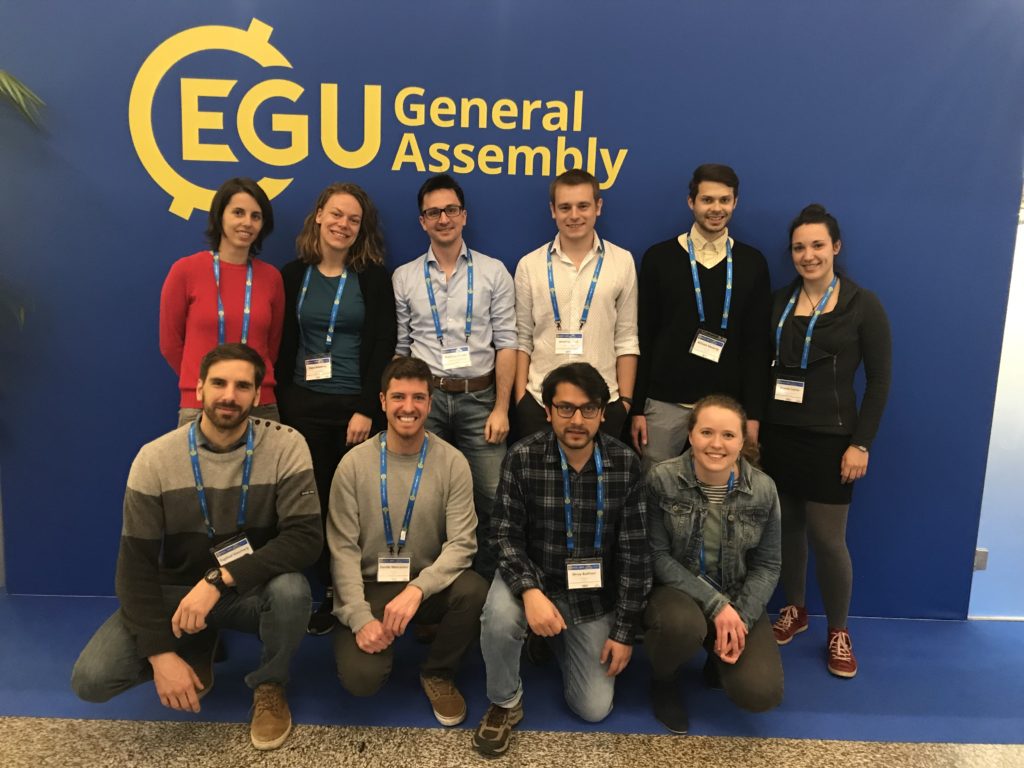 Location
Location
- Vienna, Austria
 Conference Schedule
SLATE participants
ESRs:
Conference Schedule
SLATE participants
ESRs:
- R. Barrett, ESR1 [Talk]
- J. Ford, ESR2 [Talk]
- T. Gauchery, ESR3 [Talk]
- S. Badhani, ESR4 [Talk]
- K. Heerema, ESR5 [Talk]
- D. Mencaroni, ESR6 [Poster]
- T-W Wu, ESR7 [Poster]
- S. Collico, ESR8 [Poster]
- R. Gatter, ESR9 [Poster]
- W. Meservy [Talk]
- T. Zengaffinen, ESR13 [Poster]
- M. Rauter, ESR14 [Talk]
- M. Sammartini, ESR15 [Poster]
- A. Kopf, PI of ESR7 [Poster]
- M. Clare, PI of ESR10 [PICO]
- C. Harbitz, PI of ESR13
- F. Løvholt, PI of ESR14 [Poster]
- F. Løvholt, PI of ESR14 [Convener]
- M. Strasser, PI of ESR15
- A. Georgiopoulou, Advisory Board [Talk]
Durham, Southampton and Oslo | 2019-07-07
RACHEL'S SECONDMENTS TO DURHAM, SOUTHAMPTON AND OSLO
Rachel Barrett (ESR 1) | September 2018 - January 2019 | 7 July 2019



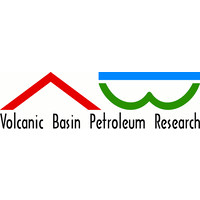
The five months between September 2018 and January 2019 saw me “flitting” (as one of my aunts so aptly put it) around Europe in order to collaborate with overseas research partners and work with a variety of data. Following the SLATE workshop last September, I spent just two days at my home-base of Kiel in northern Germany before heading off for eight weeks of secondments in the UK (at Durham University and the National Oceanography Centre in Southampton) and in Norway (at VBPR in Oslo). I also returned to Oslo for a couple of weeks in January in order to finalize figures for my first manuscript.
Secondments at Durham University and the National Oceanography Centre, Southampton (24 Sept. - 10 Oct. 2018)The purpose of my visit to Durham University was to map out turbidites evident in 3.5 kHz and single-channel seismic data across the Aegir Ridge, north of the Tampen Slide offshore of Norway, to write a report about the distribution of these turbidites, and to meet with my supervisor Pete Talling.
During a cruise in 2014, several cores that extend through, or into, these turbidite sequences were collected in the Aegir Ridge region. These cores are held at the British Ocean Sediment Core Research Facility (BOSCORF), operated by the National Oceanography Centre (NOC) in Southampton. So, during my visit to the UK, I spent a week working at BOSCORF and NOC. I worked on visual logging of one of the key cores in the area and also obtained high-resolution radiograph images of the core. As a geophysicist, I do not often get the chance to work with core material, so this was really a great opportunity to practise my core description and analysis skills.
Unfortunately, there is a large data gap between the Aegir Ridge (where the turbidites are observed) and their potential source region, which makes it difficult to fully understand the process of emplacement of these turbidites. Consequently, this component of my project is currently on hold.
Secondments at VBPR, Oslo (11 Oct. – 10 Nov. 2018, and 14-25 Jan. 2019)Following my visit to the UK, I returned to Oslo in order to continue working with the AMS17 3D seismic cube that I first began to work with at the end of August 2018. My goals for this visit were to pick the top and bottom surfaces of the Tampen Slide from the 16,000 km2 3D seismic cube, perform geomorphological analysis of the Tampen Slide headwall region and analyse the internal deformation of the Tampen Slide. I also linked the picked surfaces to other datasets in the vicinity, so as to better map out the extent of the Tampen Slide. I returned to VBPR again for two weeks in January in order to finish mapping out the base of the Tampen Slide and finalise figures for a manuscript I am working on.
Spending so much time away from my home-base of Kiel has made it challenging to get into a routine – for example, committing to a sports team here is out of the question – however, the opportunity to spend extended periods in different cities, experiencing what it is like for locals who call these places home, is both rare and one I am grateful to have had. The SLATE students and members of my supervisory team who are based in Durham, Southampton, and Oslo welcomed me into their lives and routines during the time that I spent in their respective cities, and for that I am immensely grateful.
Where?
- Department of Earth Sciences, Durham University, UK
- National Oceanography Centre, Southampton, UK
- VBPR AS, Oslo, Norway
When?
- September - November 2018
- January 2019
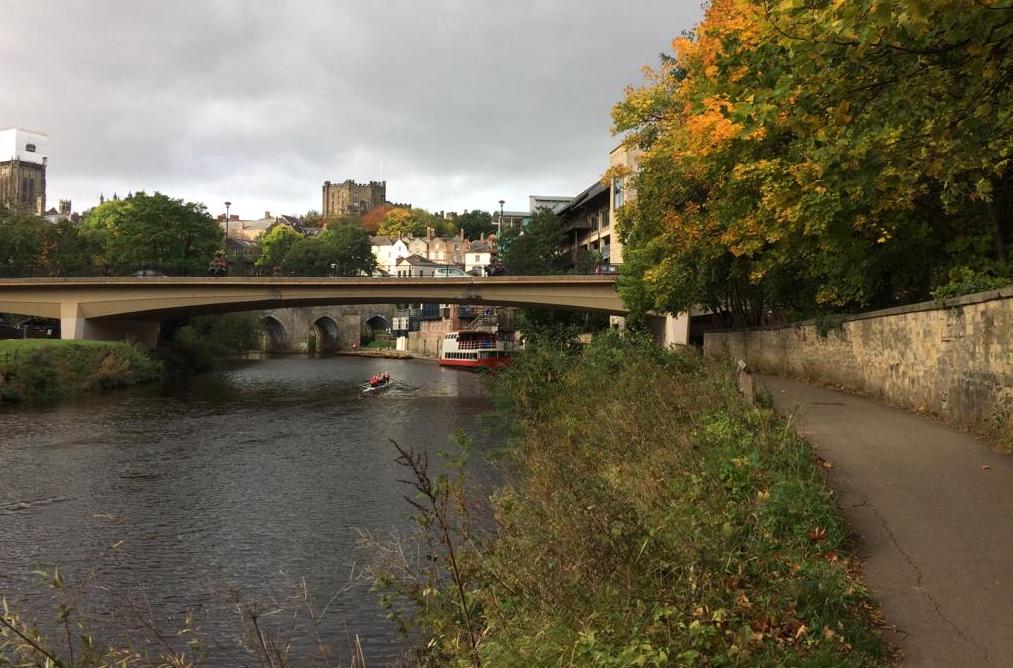
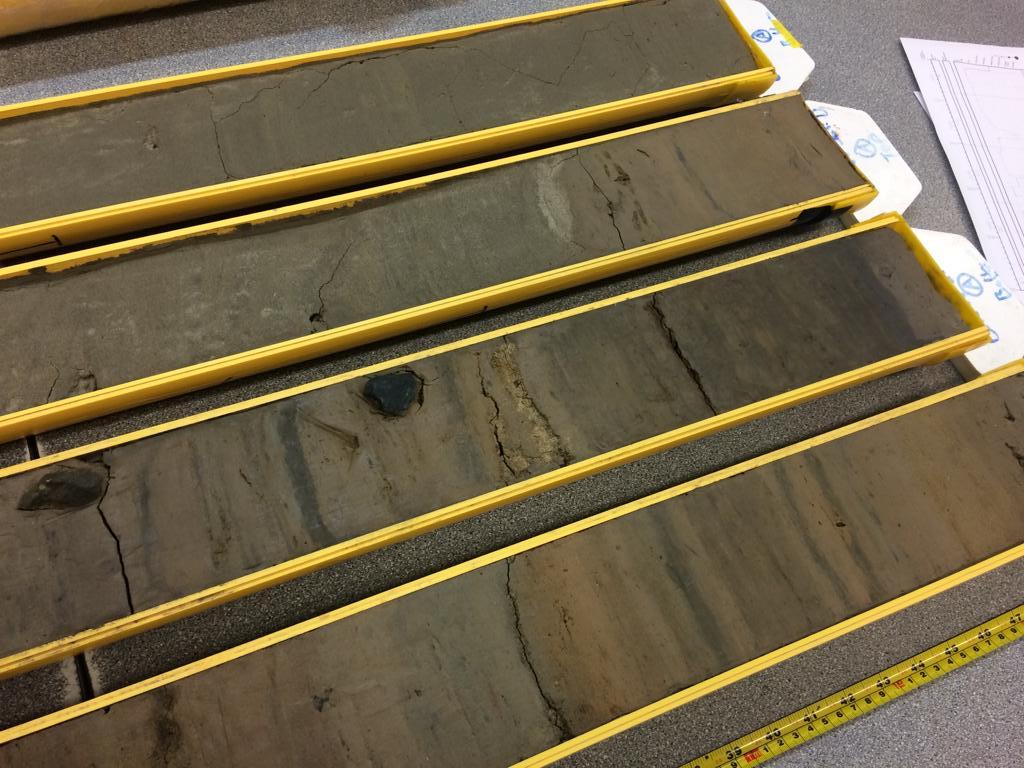
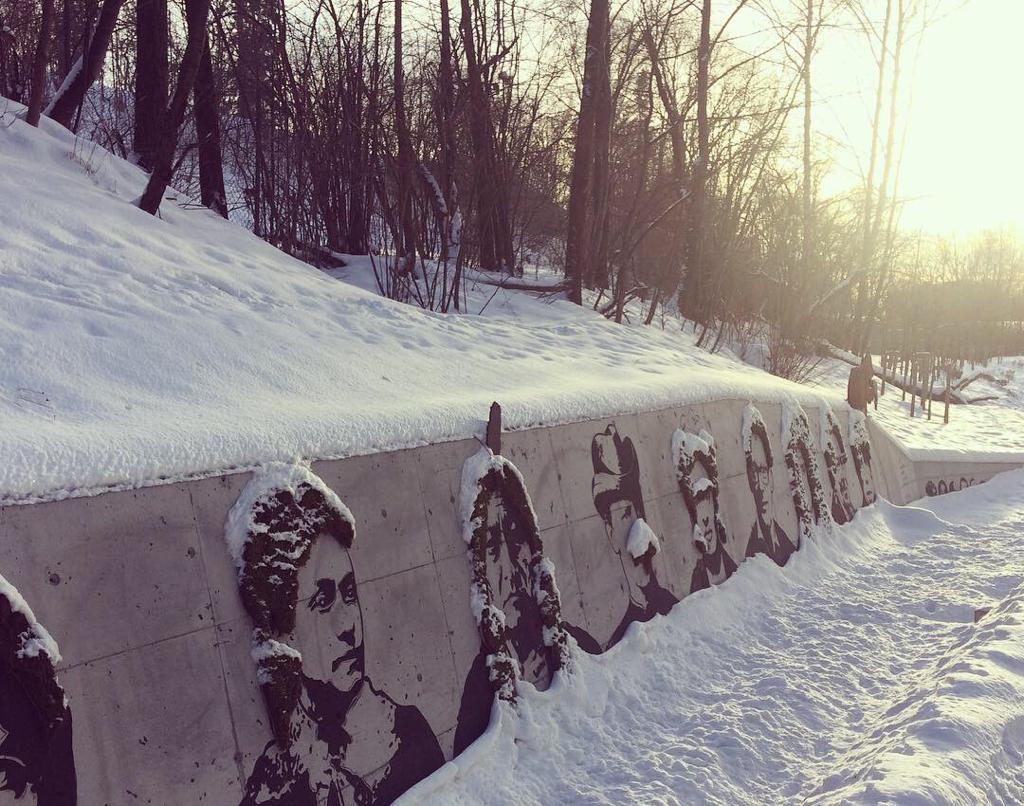
@ VBPR, Oslo | 2018-10-09
Rachel Barrett's research stay at vbpr (oslo, norway)
Rachel Barrett, ESR 1 | 27-31 August 2018

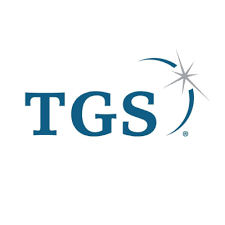
My project has significantly changed direction since this time last year; with the availability of new, very high resolution data being responsible for the shift. TGS recently collected a high resolution 3D seismic cube which covers part of the Tampen slide in the Norwegian Sea, and I was invited to work on this dataset with Benjamin Bellwald and Sverre Planke at VBPR in Oslo.
Multiple large-scale submarine landslides have been identified on the North Sea Fan; and the timing of the largest four of these slides is thought to be related to glacial-interglacial cycles, with a large slide occurring a few thousand years after the transition to an interglacial [Bryn et al., 2005; Solheim et al., 2005]. The Storegga Slide (with a volume of 3500 km3) is the most recent of these large-scale landslides on the Norwegian continental margin, having occurred ~8 ka (thousand years ago). Tampen, the penultimate slide, is purported to have occurred ~125 ka [Berg et al., 2005; Nygård et al., 2005; Solheim et al., 2005]; however, cores collected from the Aegir Ridge in 2014 indicate that this age model may need to be revised. If so, then the preconditioning and triggering mechanisms of the Tampen slide may also require further consideration.
The main goals of my week-long visit to VBPR were to familiarize myself with the new 3D seismic cube; ascertain how that cube can be correlated with other data that images the Tampen slide; and devise a work plan for this component of my project. The team at VBPR were very welcoming and supportive, and I really enjoyed being integrated into their office for the week. It was a new experience for me to be working alongside others who were (are) simultaneously studying different aspects of the same dataset, and I look forward to working with them more in the coming months!
I am also pleased to say that I learnt from my mistake earlier this year - when I had a short research stay in Malta but was too busy to explore much during the weekend I was there - and made the most of the opportunity to explore Oslo; even joining an informal city tour led by the NGI Norwegian teacher (who is also a part-time tour guide), thanks to an invite from fellow SLATE ESRs Thomas and Matthias who are based at NGI (the Norwegian Geotechnical Institute).
References Berg, K., Solheim, A. and Bryn, P. (2005). The Pleistocene to recent geological development of the Ormen Lange area. Marine and Petroleum Geology, 22(1–2 SPEC. ISS.), pp. 45–56. Bryn, P. et al. (2005). Explaining the Storegga Slide. Marine and Petroleum Geology, 22(1–2), pp. 11–19. Nygård et al. (2005). The glacial North Sea Fan, southern Norwegian Margin: architecture and evolution from the upper continental slope to the deep-sea basin. Marine and Petroleum Geology, 22(1–2), pp 71-84. Solheim, A. et al. (2005). The Storegga Slide complex: repetitive large scale sliding with similar cause and development. Marine and Petroleum Geology, 22(1–2), pp. 97–107. Where? When?- 27-31 August 2018
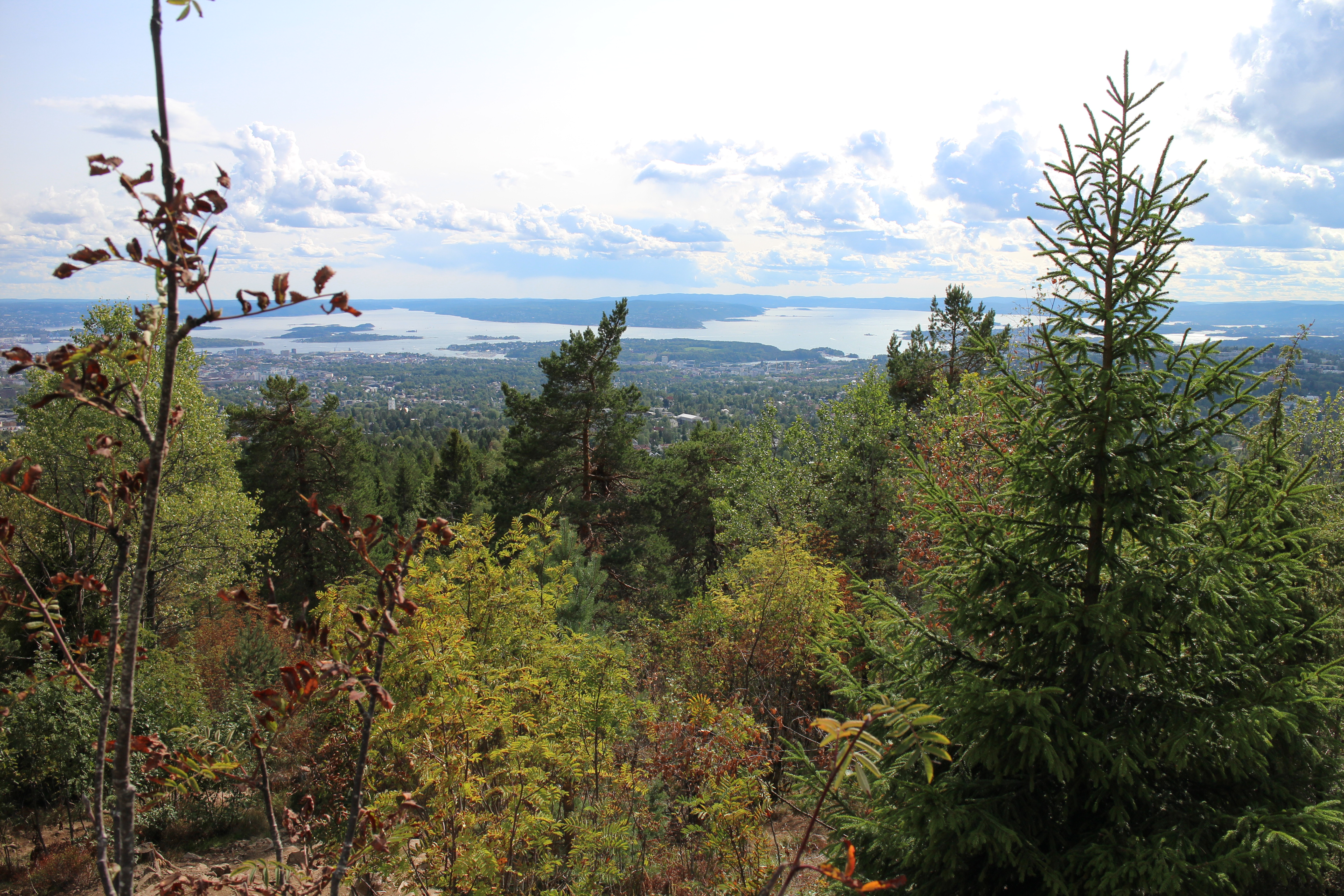

Let's get muddy! | 2018-10-09
LAKE LUCERNE FIELD TRIP - LET'S GET MUDDY!
Rachel Barrett (ESR 1) , Thomas Zengaffinen (ESR 14), Matthias Rauter (ESR 15) | @ Lake Lucerne, Switzerland (3 October 2018)
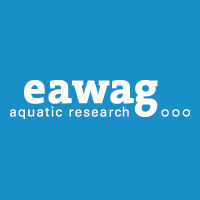
We spent our second annual workshop at EAWAG Kastanienbaum on the edge of Lake Lucerne, Switzerland (see previous posts). One component of this workshop was a field trip, where we split into three groups of five, and studied lacustrine landslides in three separate regions of Lake Lucerne. All the groups spent a day out on the lake collecting cores, 3.5 kHz seismic data and CPT data in their regions of interest, before processing the data and attempting to answer questions about slope stability (Weggis Slide), failure and flow mechanics (Zinnen Slide), the timing and lateral extent of the slide (Kastanienbaum, i.e. "SLATE Slide").
Weggis Slide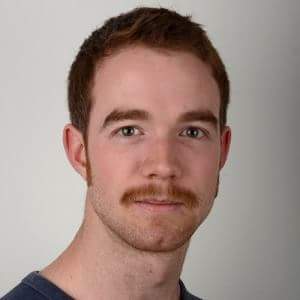 Thomas Zengaffinen
ESR 13
Thomas Zengaffinen
ESR 13
In this region, our aim was to assess the sediment stability by getting shear strength profiles of unfailed sediment layers. We began by collecting 3.5 kHz seismic data in the region of interest. This data showed past landslide deposits and unfailed terraces, which could be potential future landslide sediments. After studying the seismic sections, we decided on where to characterise the sediments by taking 1m deep sediment cores and measuring shear strength at about 4m depth. The next step was to open the collected cores, and then describe and interpret the observed layering.
In addition, we did Cone Penetration Tests (CPTs) at regular increments of a few centimeters along the core; the results of which could be converted into measurements of shear strength. This procedure resulted in shear strength profiles of the lake subsurface sediments at our decided spots.
This kind of analysing landslide sediments is not part of my daily work in Oslo. What I am working on in Oslo is simulating the landslide rather than working with sediments itself. Nevertheless, it was a qualitative experience that added to my modelling project. I got a feeling of how the mass of my simulated landslide may look like and how measurements of the slide mass are taken. All in all, this field trip gave me a new point of view of landslides. Working with sediment cores and assessing slope stabilities is a complementary discipline to my modelling project. I now have a broader understanding of my own project, and of the entire SLATE project.
Zinnen Slide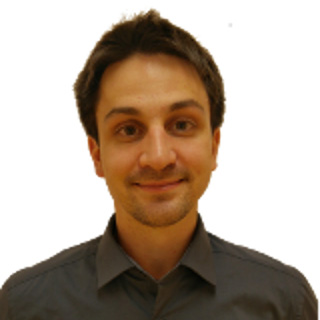 Matthias Rauter
ESR 14
Matthias Rauter
ESR 14
My group investigated a slope a short distance west of the Weggis slide. The bathymetry of the slope shows multiple slides, presumably dating back to the earthquake of 1601. The slide scars are interrupted by stripes of unfailed sediment, giving the slope the look of battlements/towers (German: Zinnen) in the bathymetry. This particular feature makes the slope very interesting for our investigations. The unfailed areas allow us to investigate the pre-failure situation, layering and, to some extent, shear strength. The failed areas, on the other hand, allow insights into failure mechanisms and flow dynamics. The combination of both unfailed and failed slope areas gives a comprehensive recording of the 1601 landslide event. Furthermore, this slope provides us with valuable information for model validation, as the situation both before and after the event can be reconstructed from sediments.
We took seismic profiles, extracted core samples and performed CPTs in the slide deposit region and also in undisturbed sediments nearby. The results of this survey amazed me, as a model developer who has never been involved in field work; the data gave us a detailed view of undisturbed, compressed and sheared sediments, as well as debris flow and turbidity current deposits. I would never have expected to find such a detailed history of a landslide event in 400 year old sediments.
This experience changed my view on experimental geology substantially and I look forward to recalculate this or a similar event with models that we will develop over the next few years.
SLATE Slide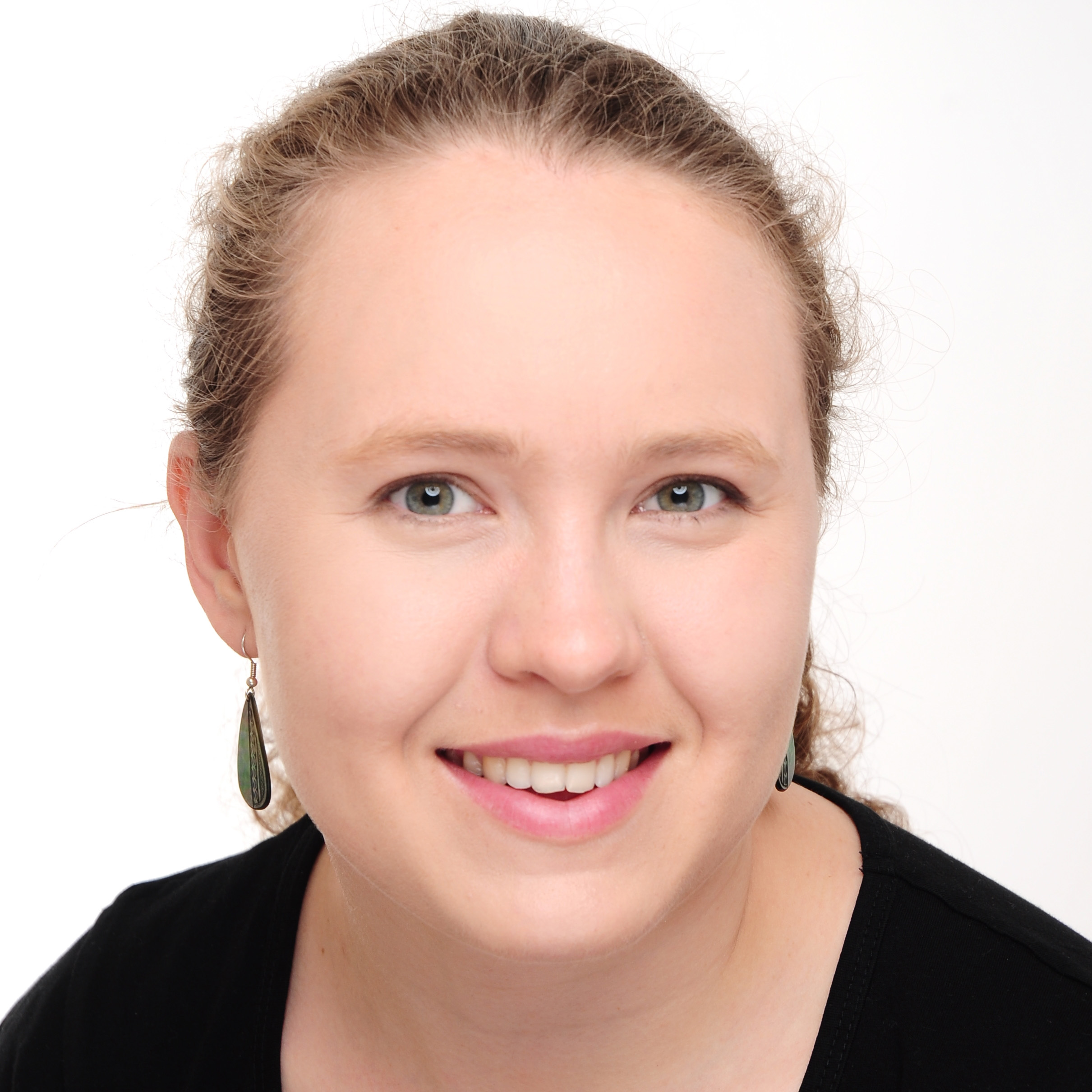 Rachel Barrett
ESR 1
Rachel Barrett
ESR 1
Our project was structured a little differently to the other two groups, due to only having two surveying vessels available. Consequently, we began the field work component of this workshop with half a day of project planning, before acquiring 3.5 kHz seismic profiles, cores and CPTs, and then processing and analyzing the data.
Our study area was just 300 m offshore from EAWAG at Kastanienbaum. A landslide headwall was evident in the multibeam data (see Figure), but few seismic profiles and no cores or CPT data had been acquired in the area, so the landslide (dubbed "SLATE slide" by our team) was relatively unsurveyed. Our aims were to determine the lateral extent and volume of the slide, find out information about the nature of the basal glide plane, and try to constrain the timing of the slide. With this in mind, we constructed a survey plan for the two half days of data collection.
For me, being involved in the project from the initial planning stage was a really valuable experience. We had identify what our key priorities were, and then had to keep coming back to those while surveying, so as to optimize the time spent collecting data. This was especially important when we began to run out of time while collecting 3.5 kHz data due to over-ambitious planning, and was a great exercise in flexible thinking.
Integrating multiple types of data and approaches is critical to getting the full story in any geological area; and so working with core and CPT data was also a helpful learning exercise for me, because, as for Thomas and Matthias, working with these data is not a regular occurrence.
Designing a survey to investigate a landslide, acquiring data, and processing/analyzing that data in such a short time (only two days when we could have easily used one or two weeks) was definitely an ambitious project; however, I think it is safe to say that all fifteen of us learnt something new or developed a skill/skills, and also enjoyed ourselves during the field work exercise.
Related blog posts from the 'Lake Lucerne Workshop' blog series Location- EAWAG Kastanienbaum (Lake Lucerne)
